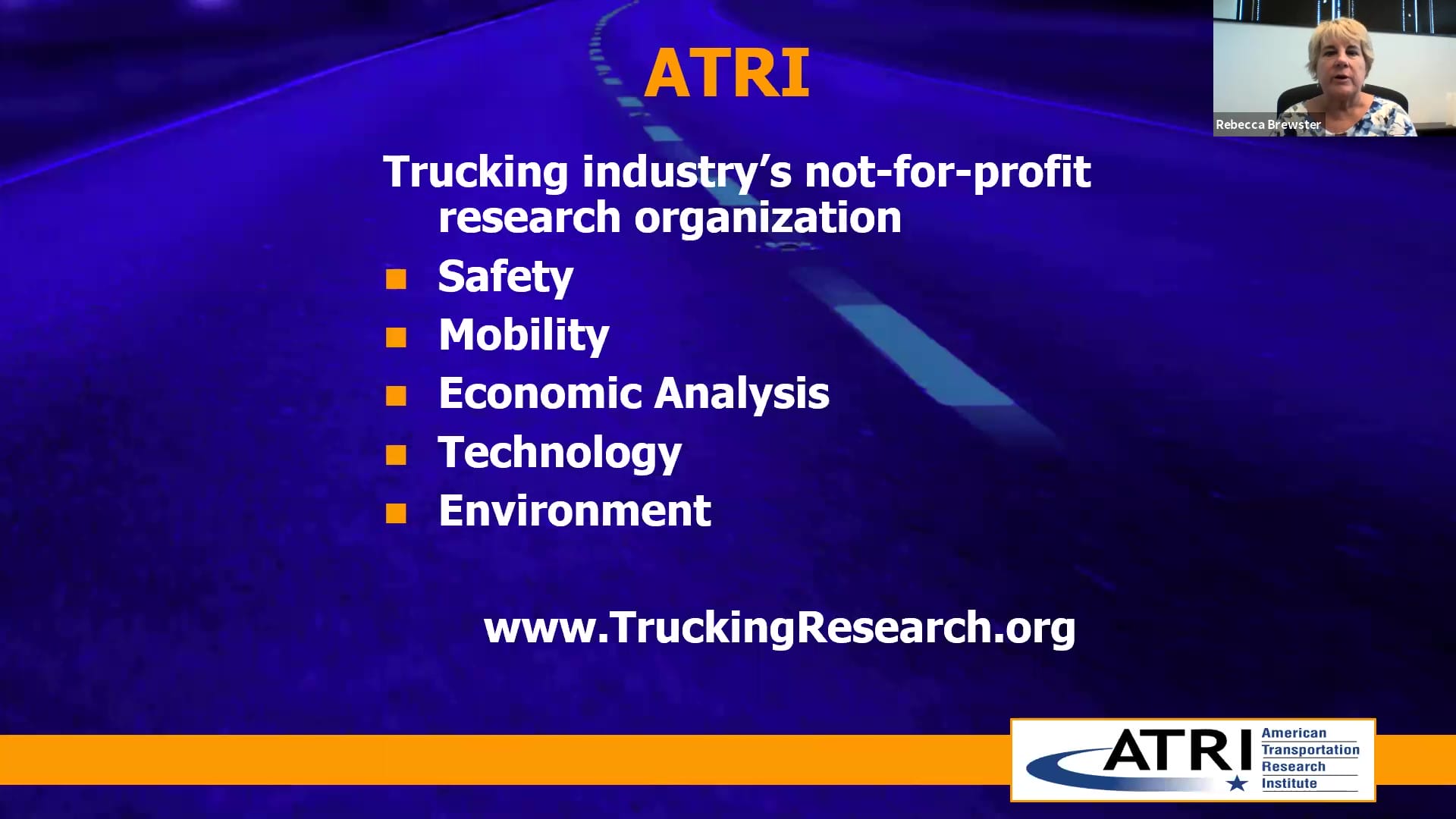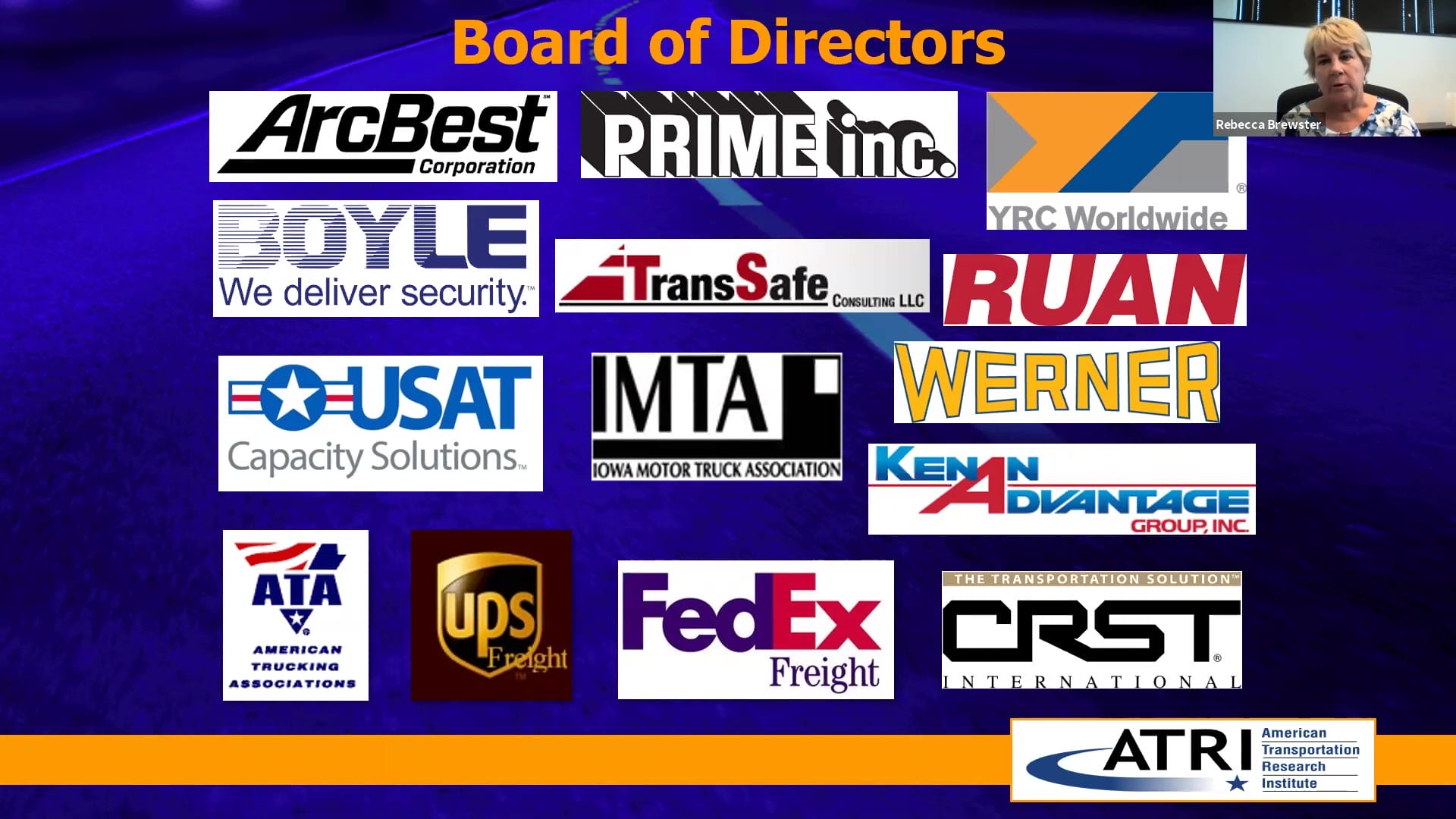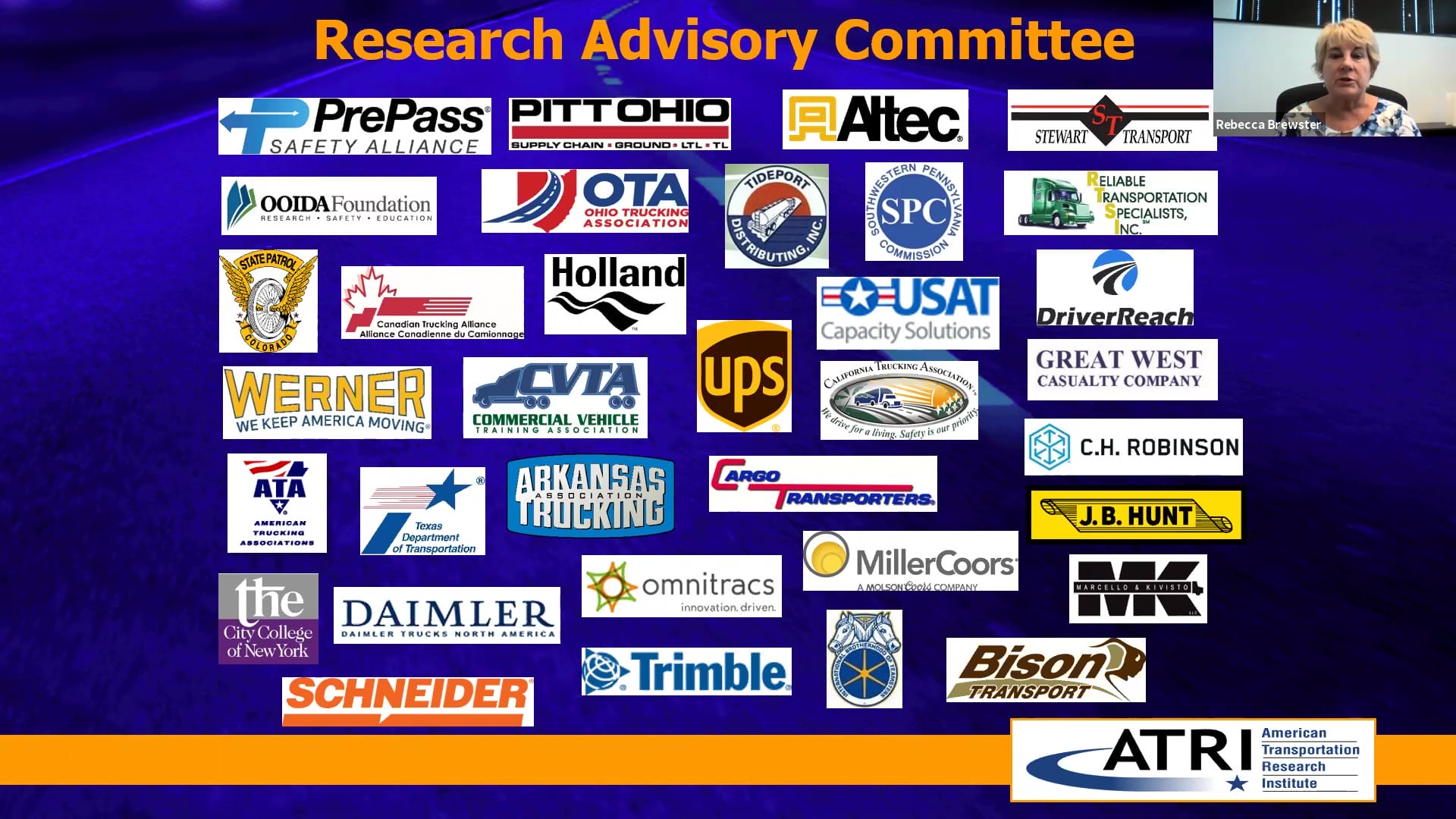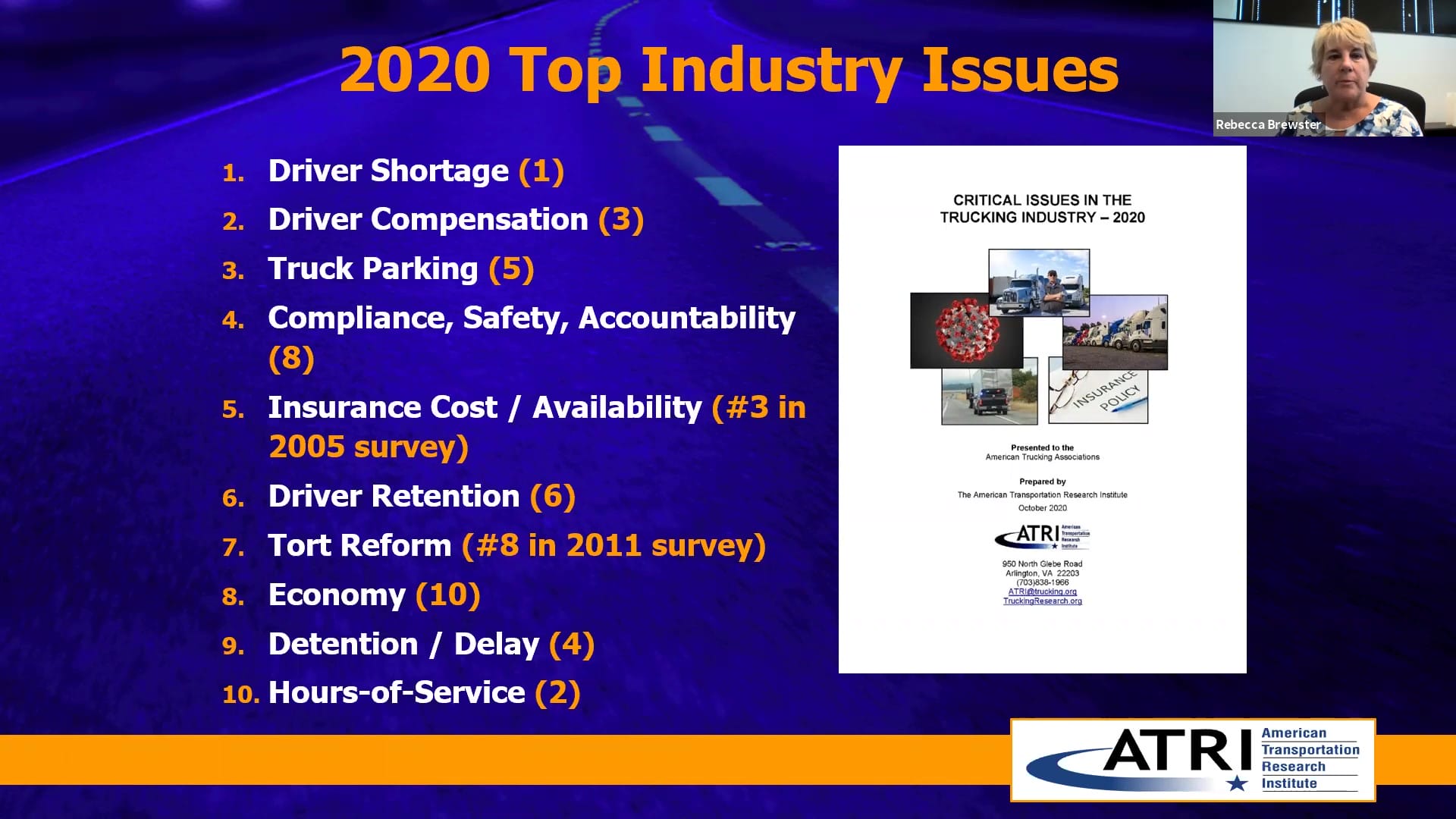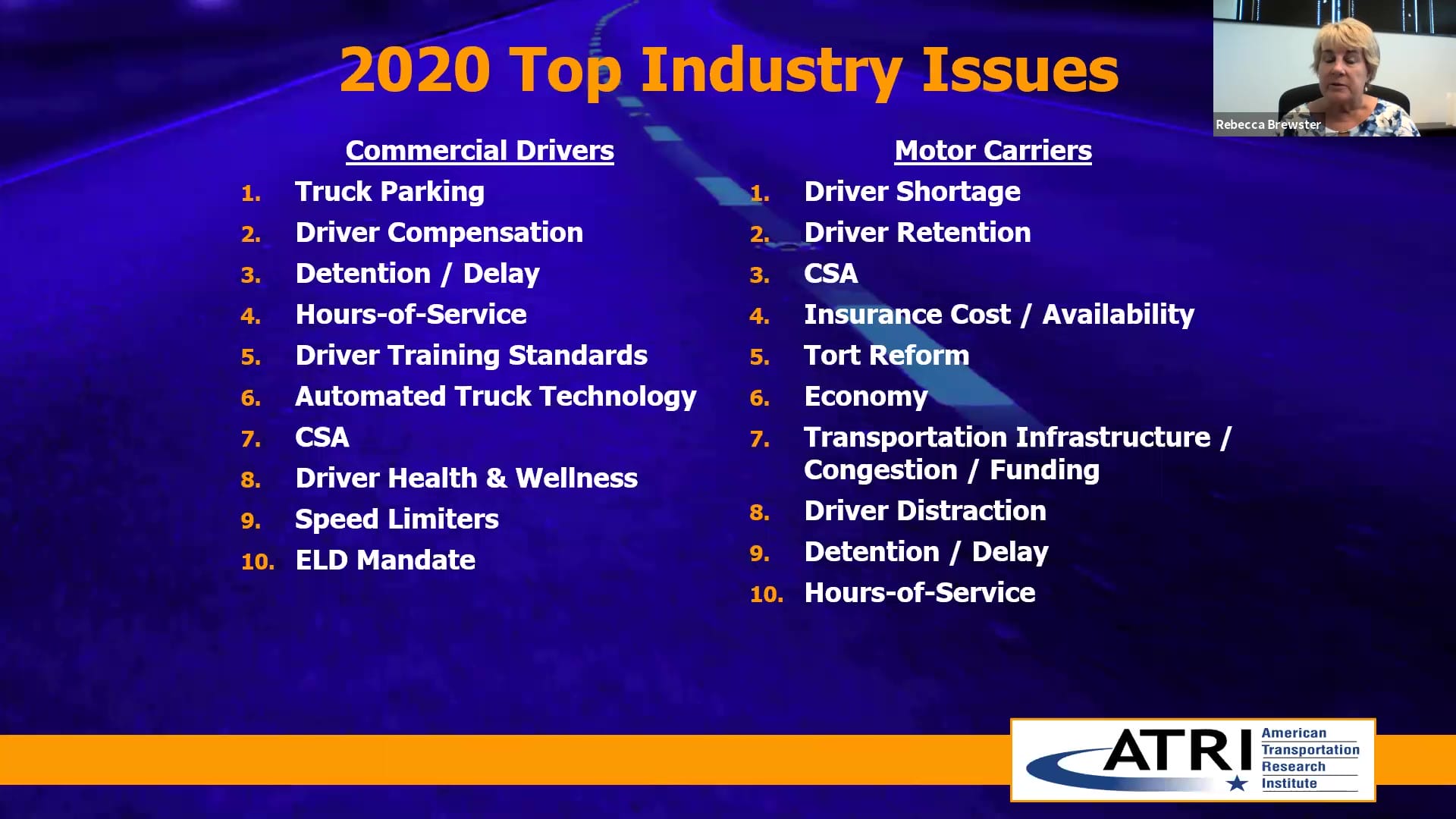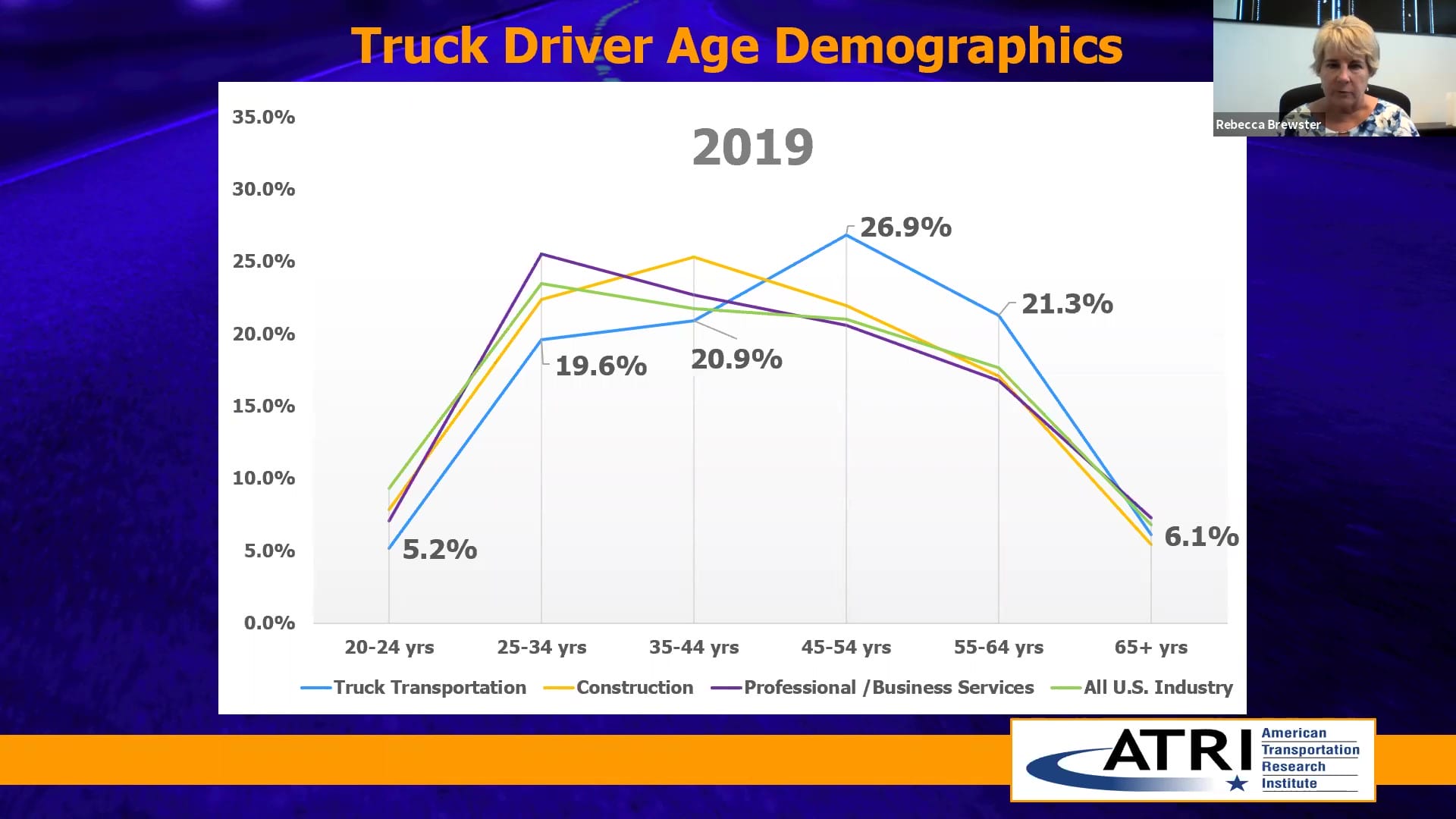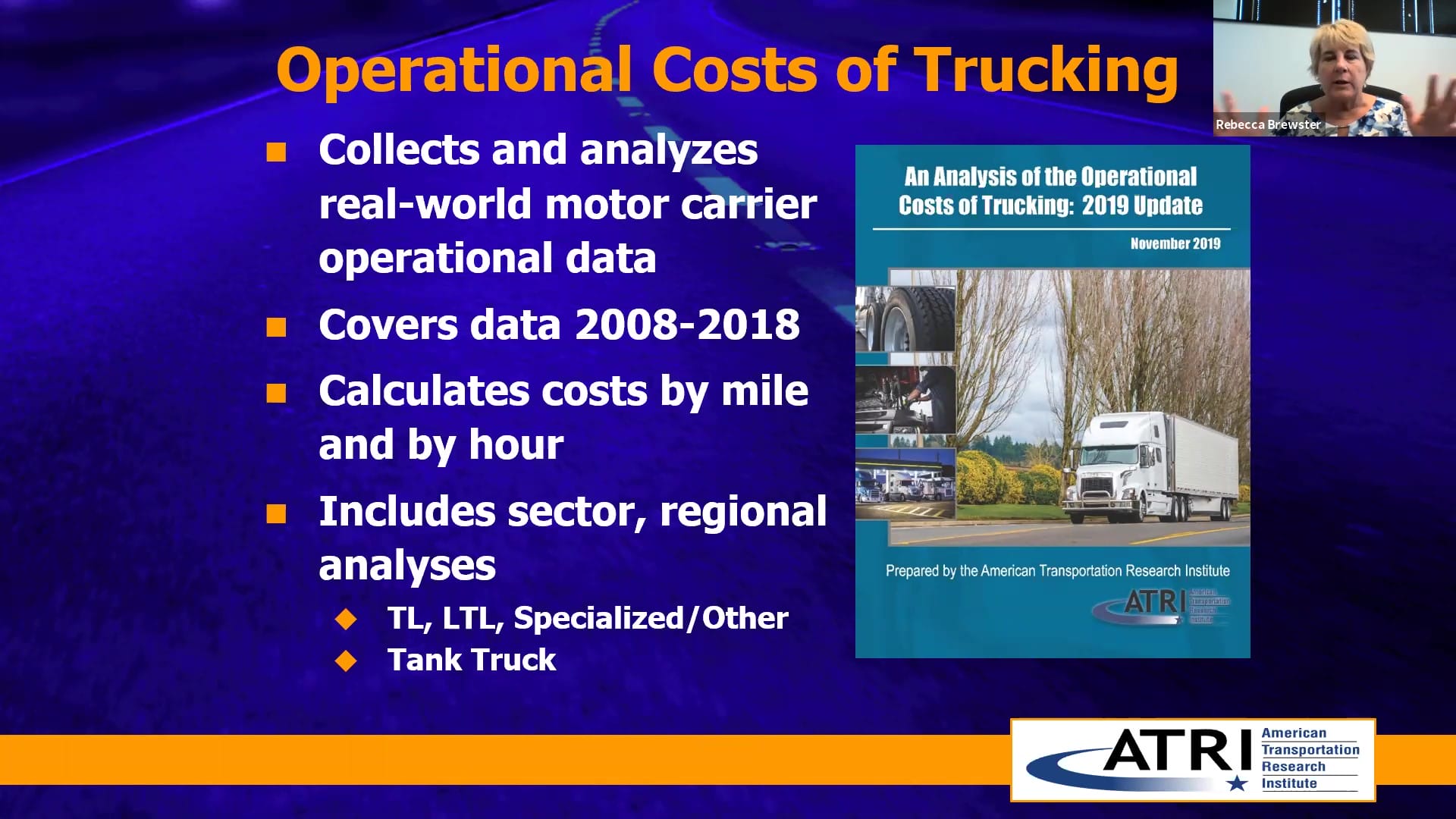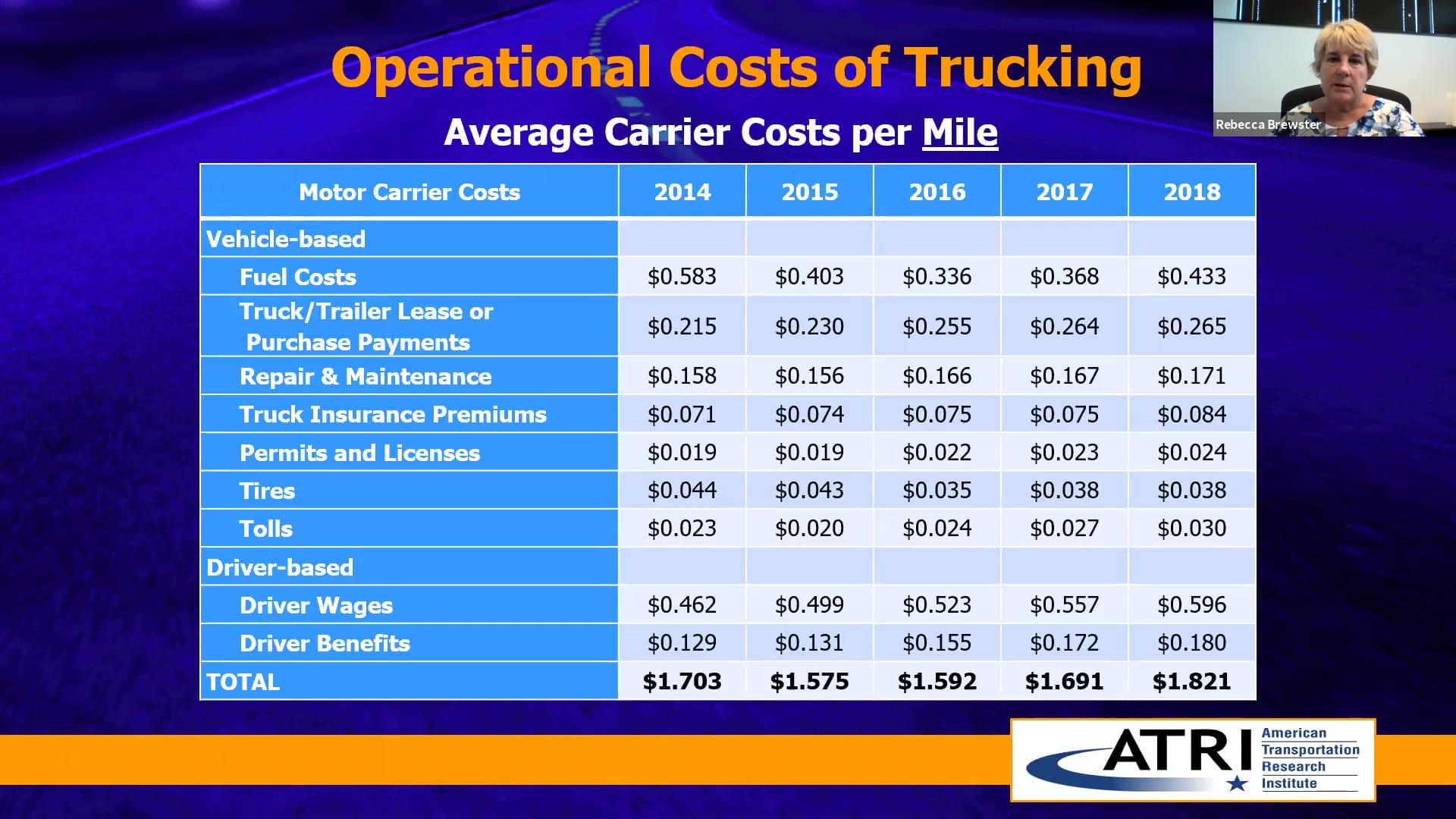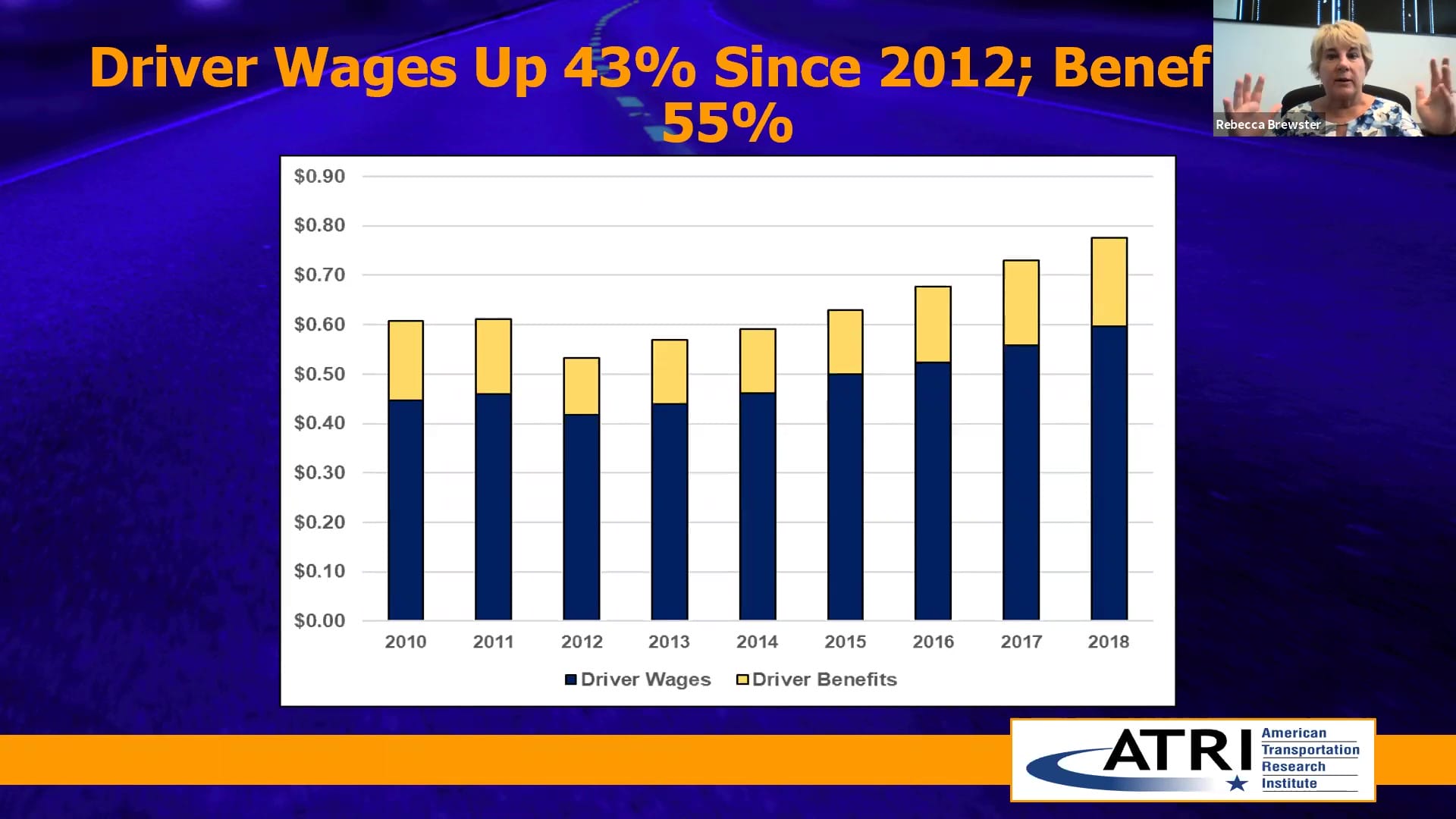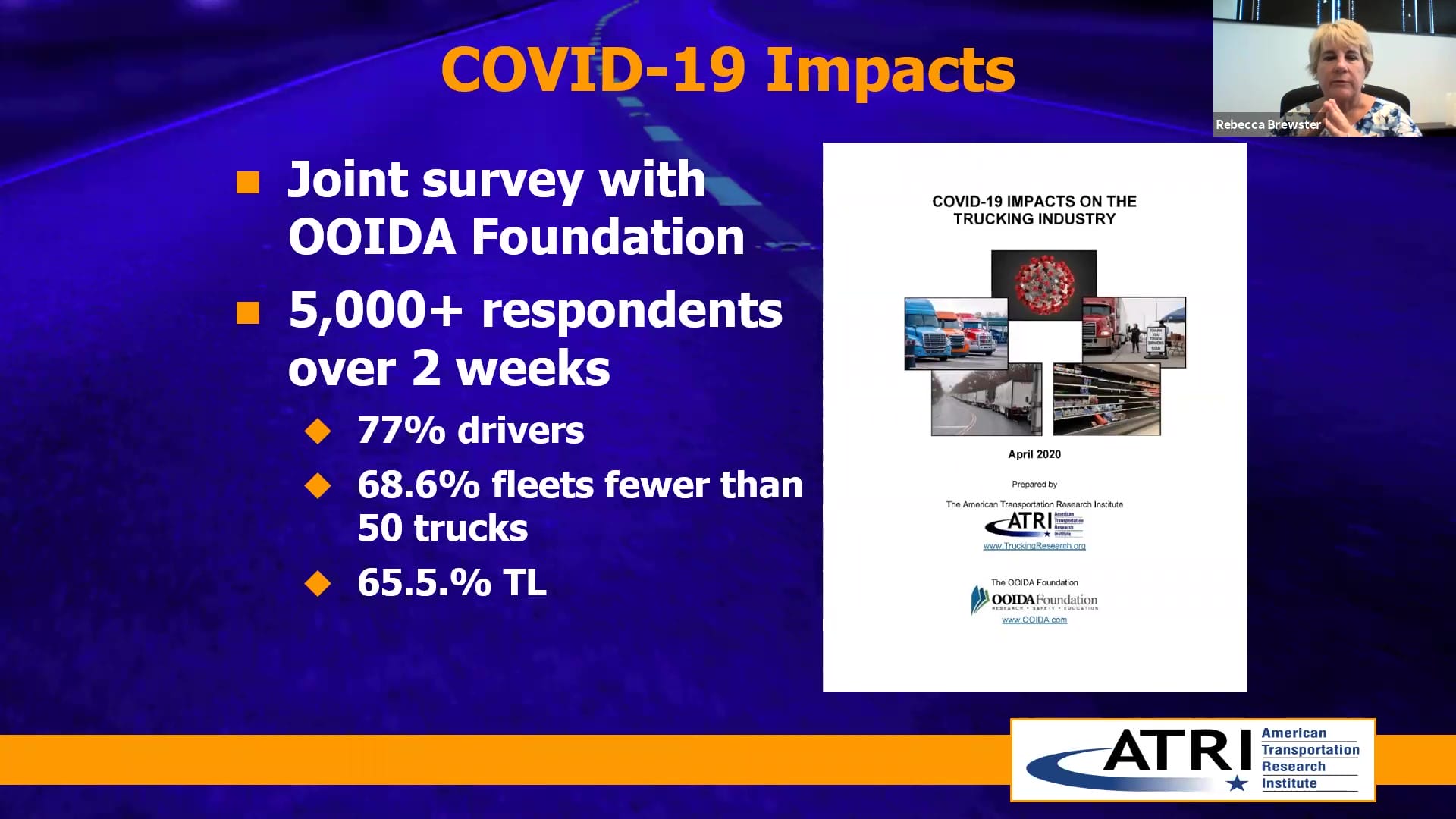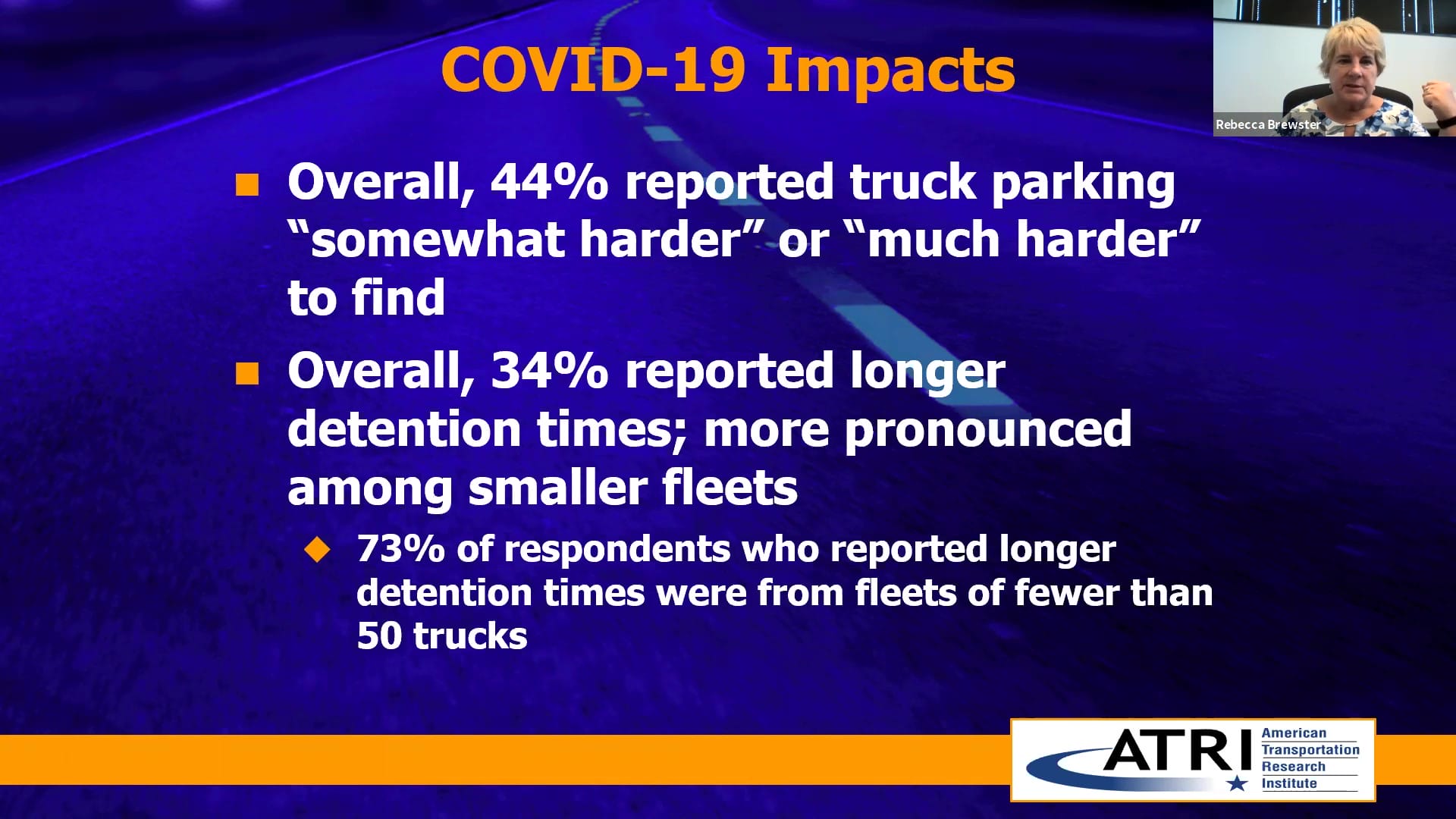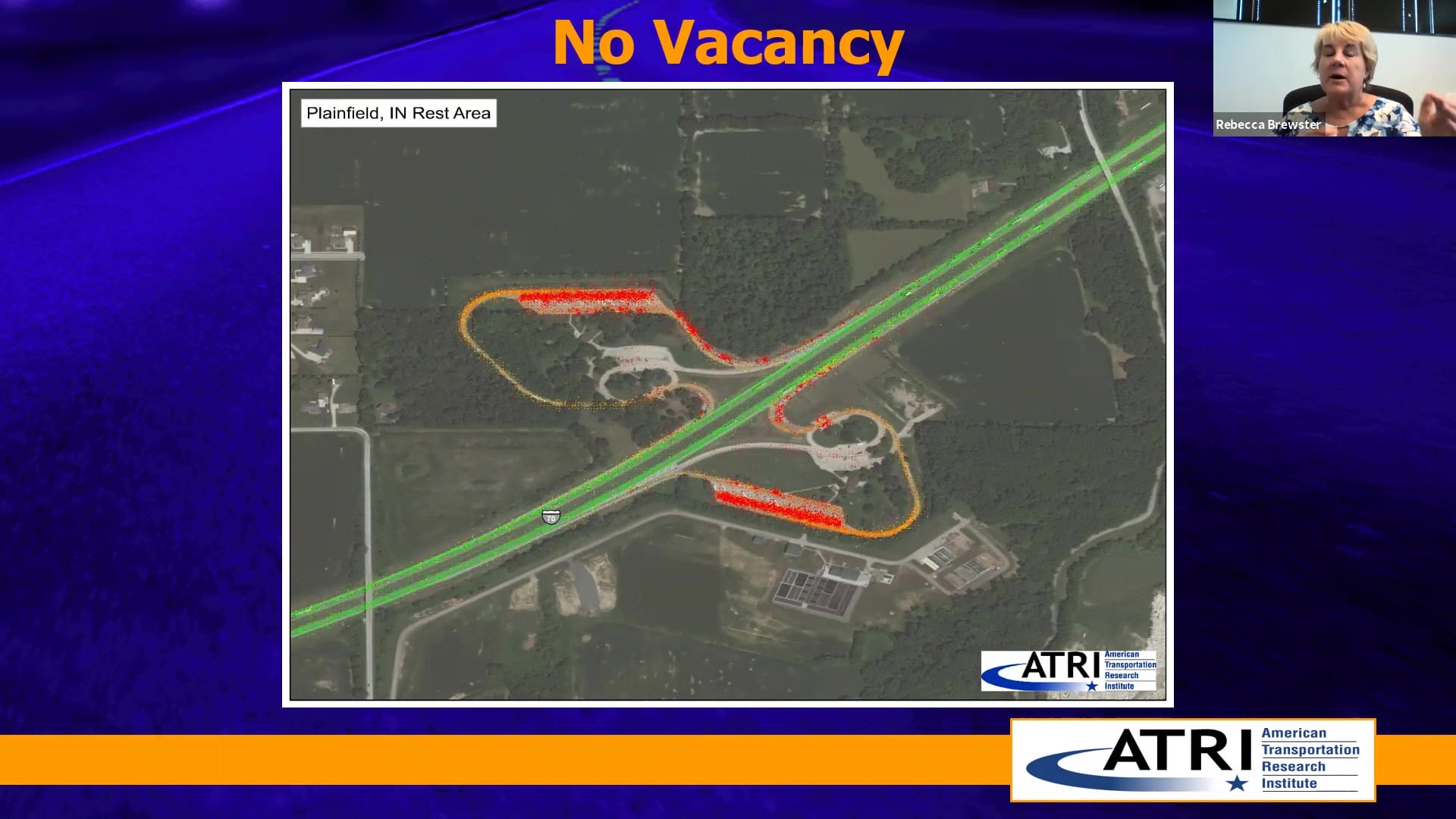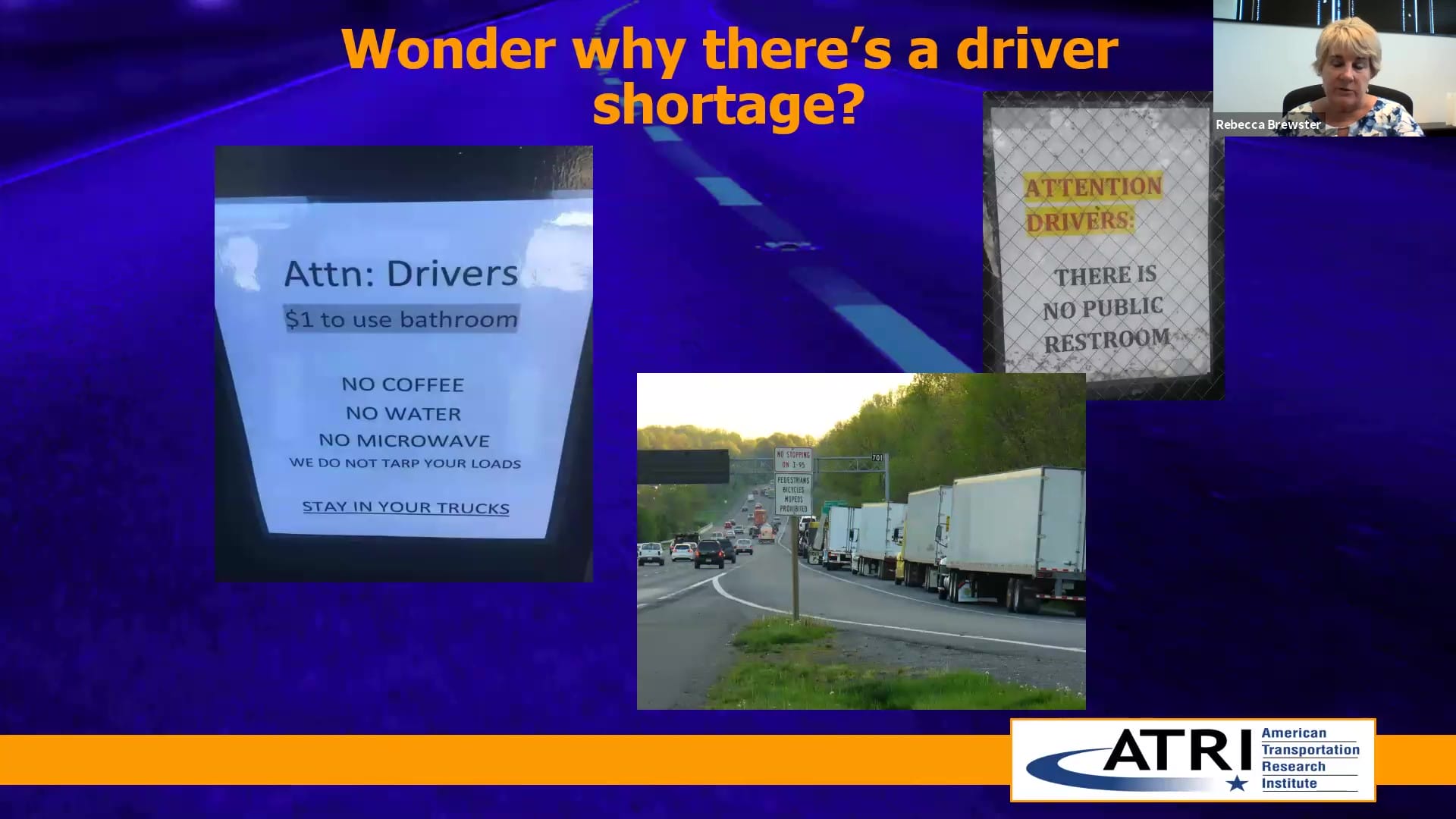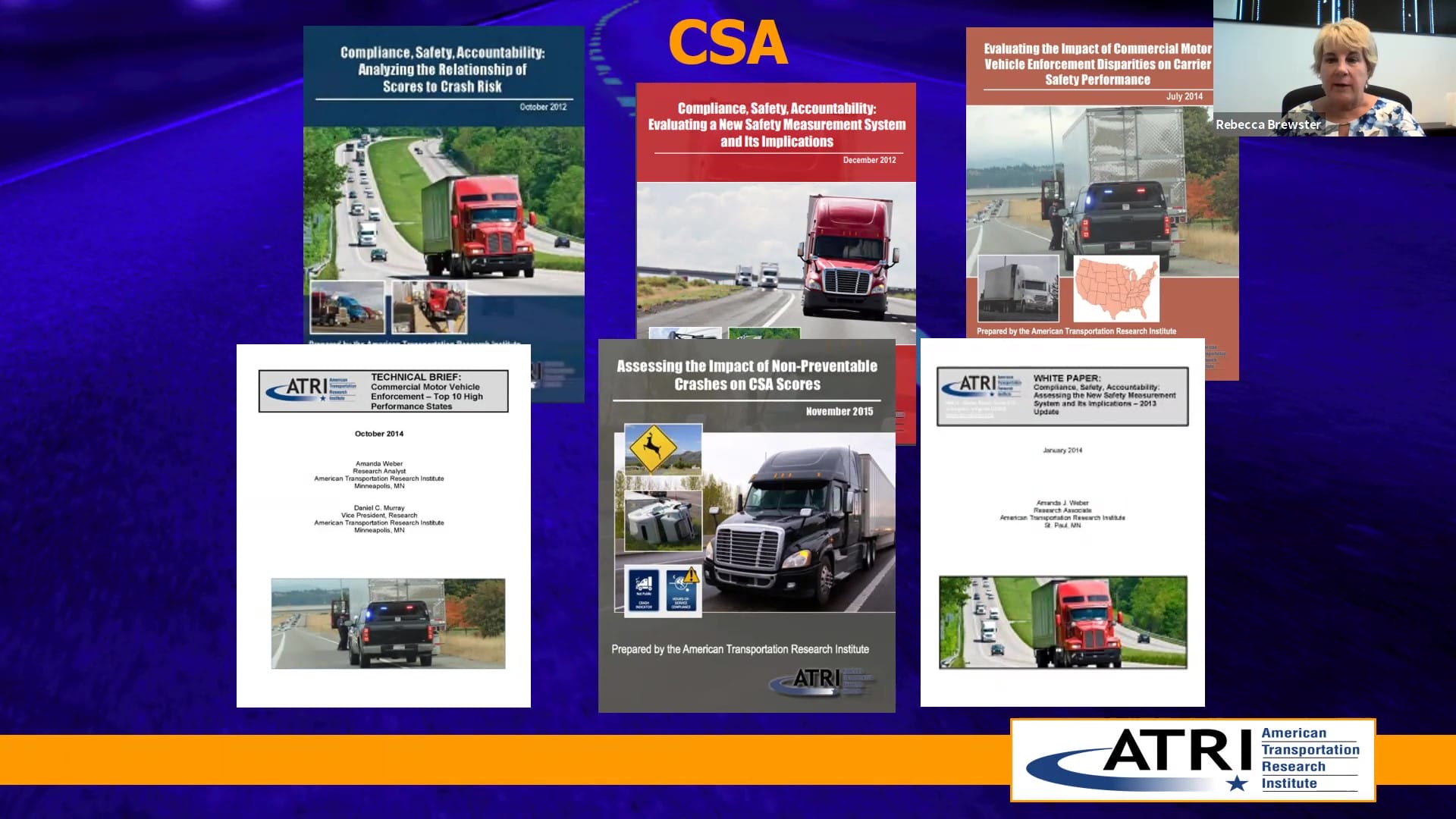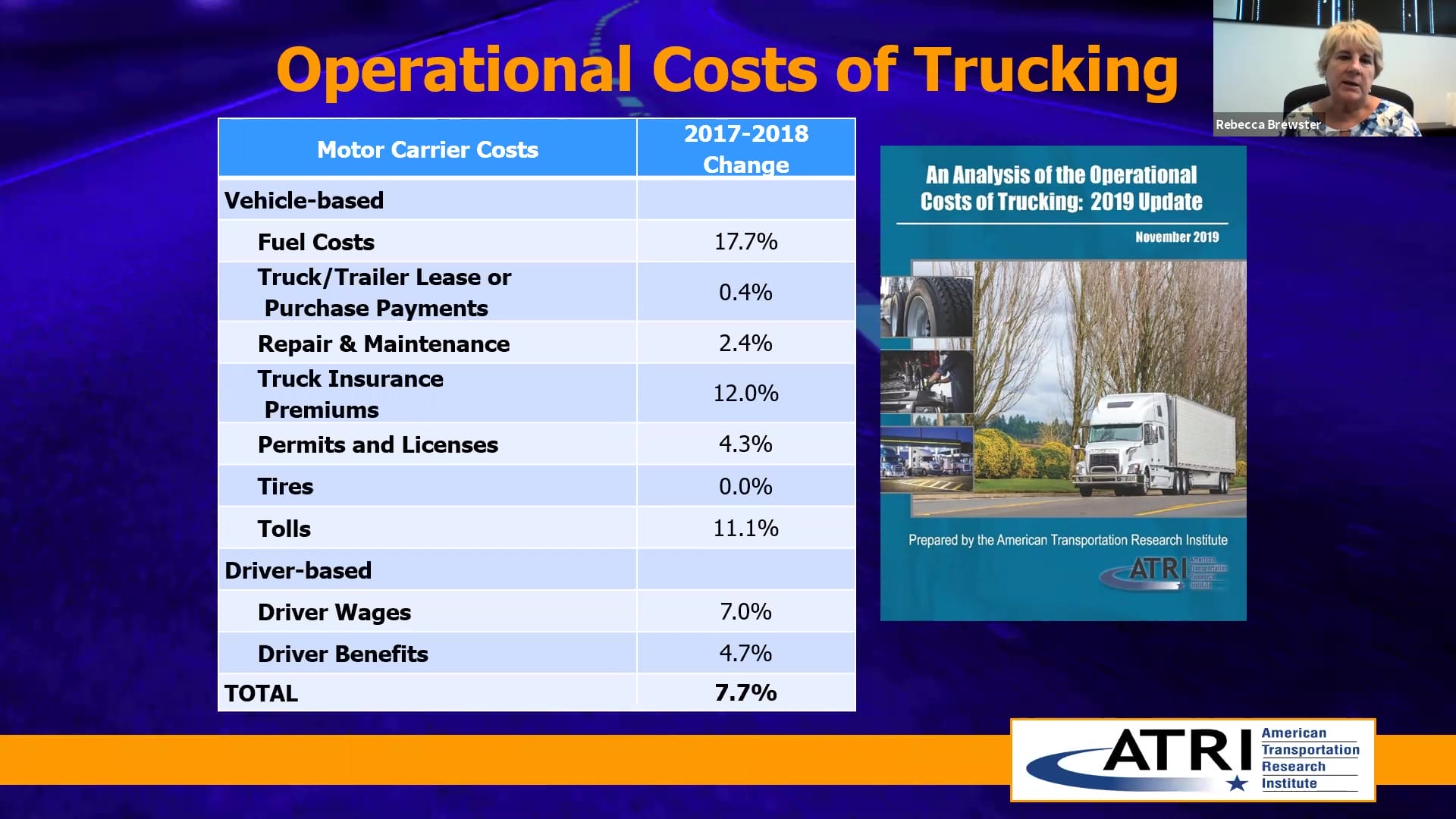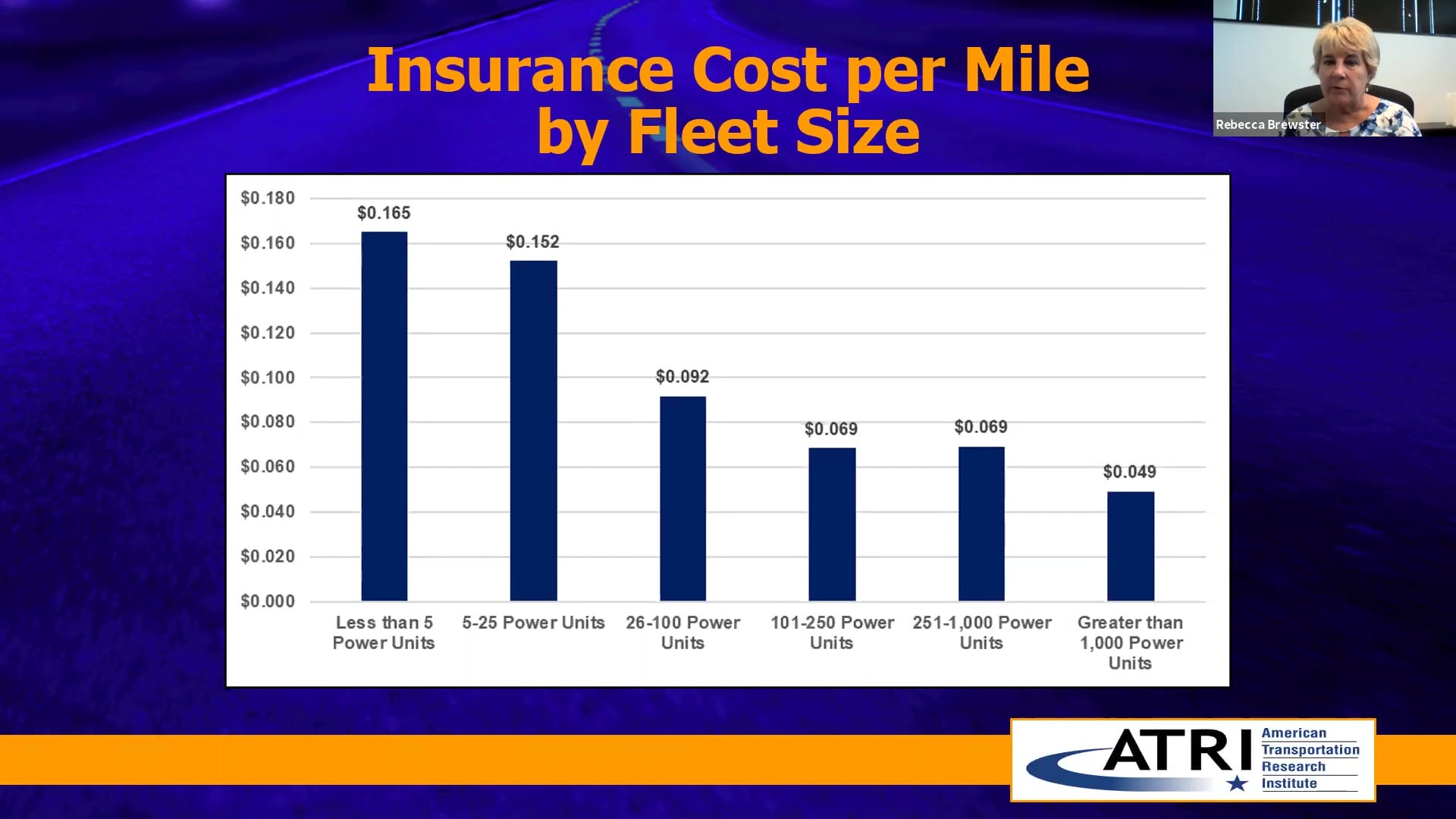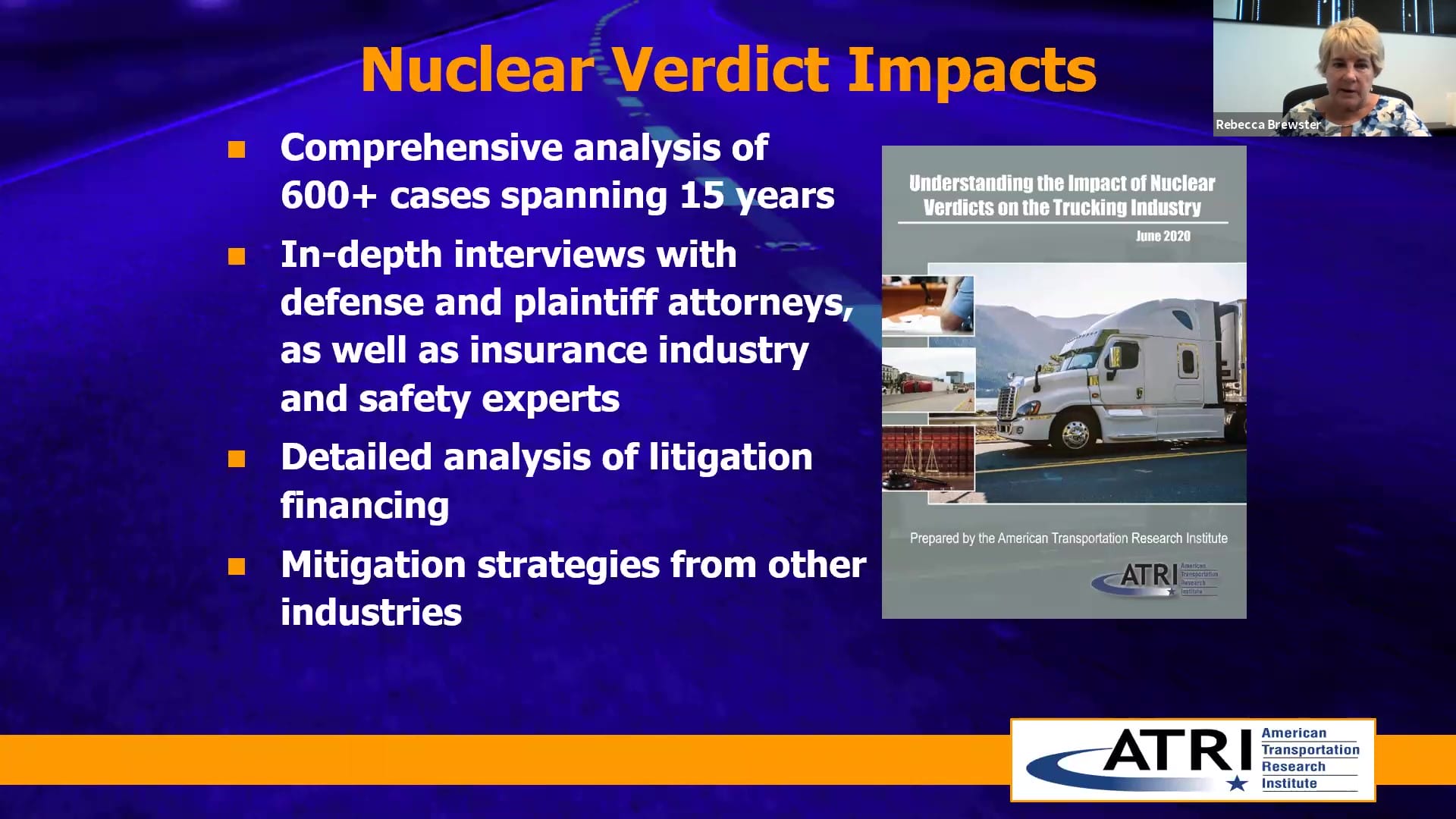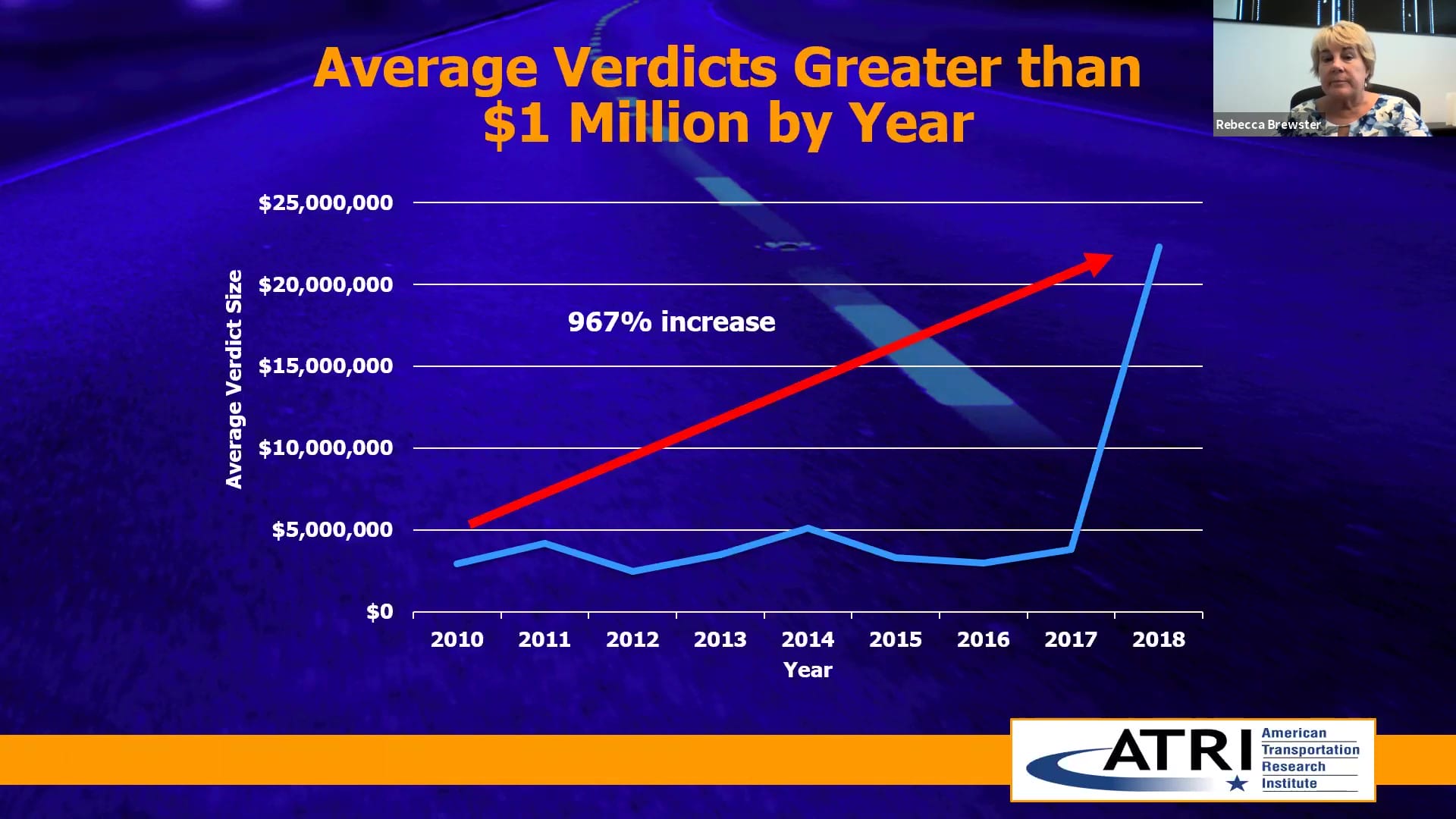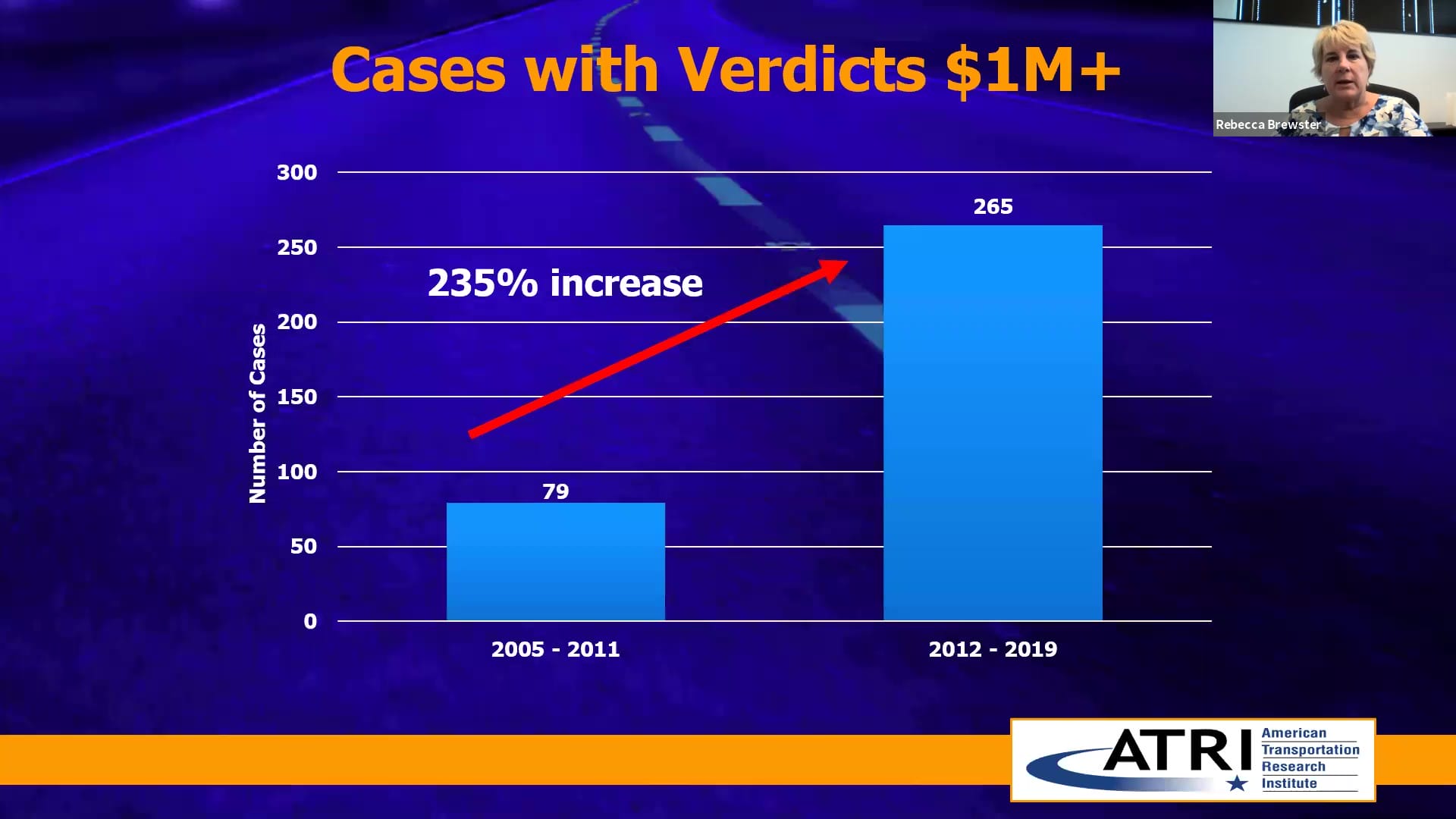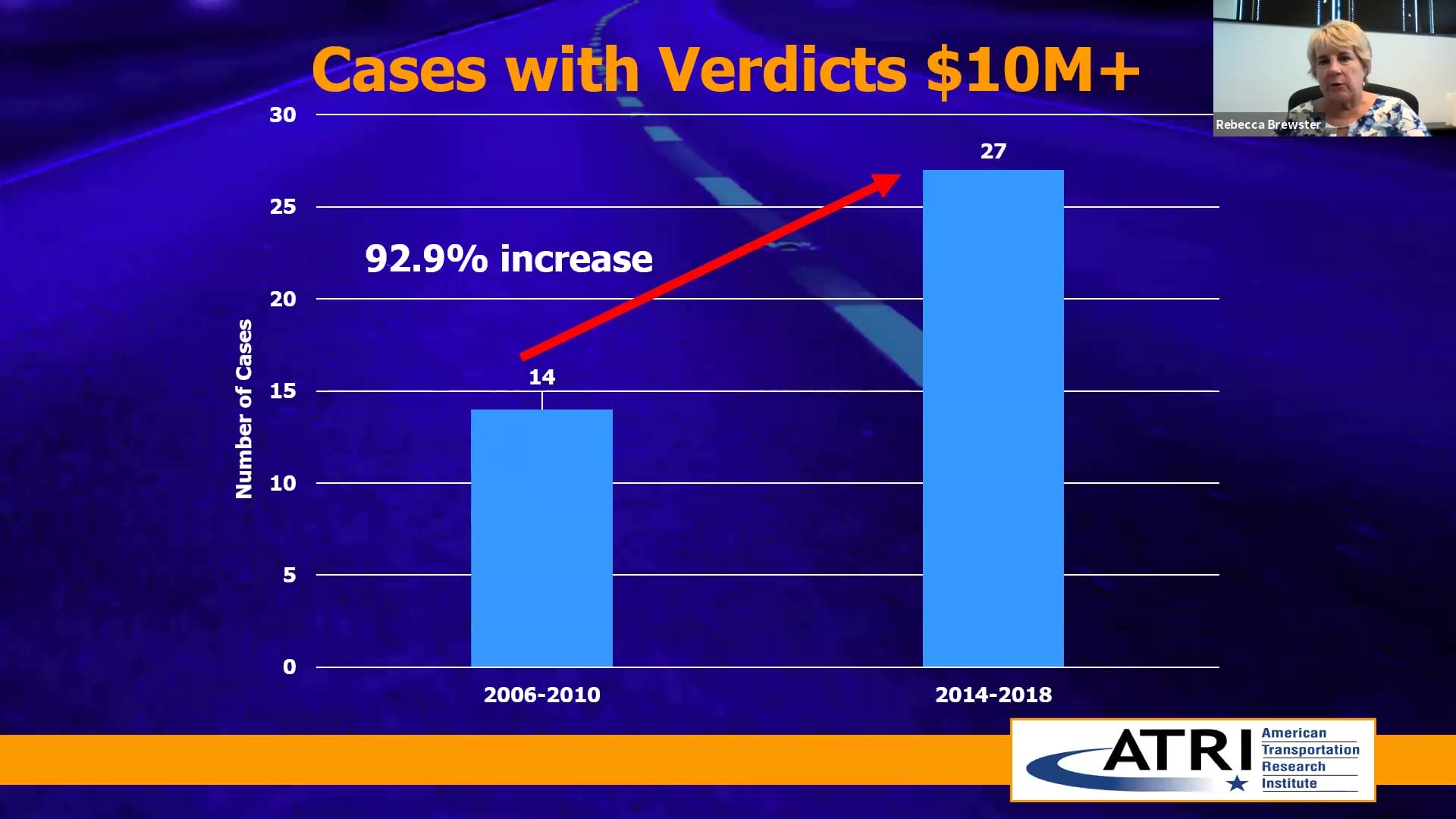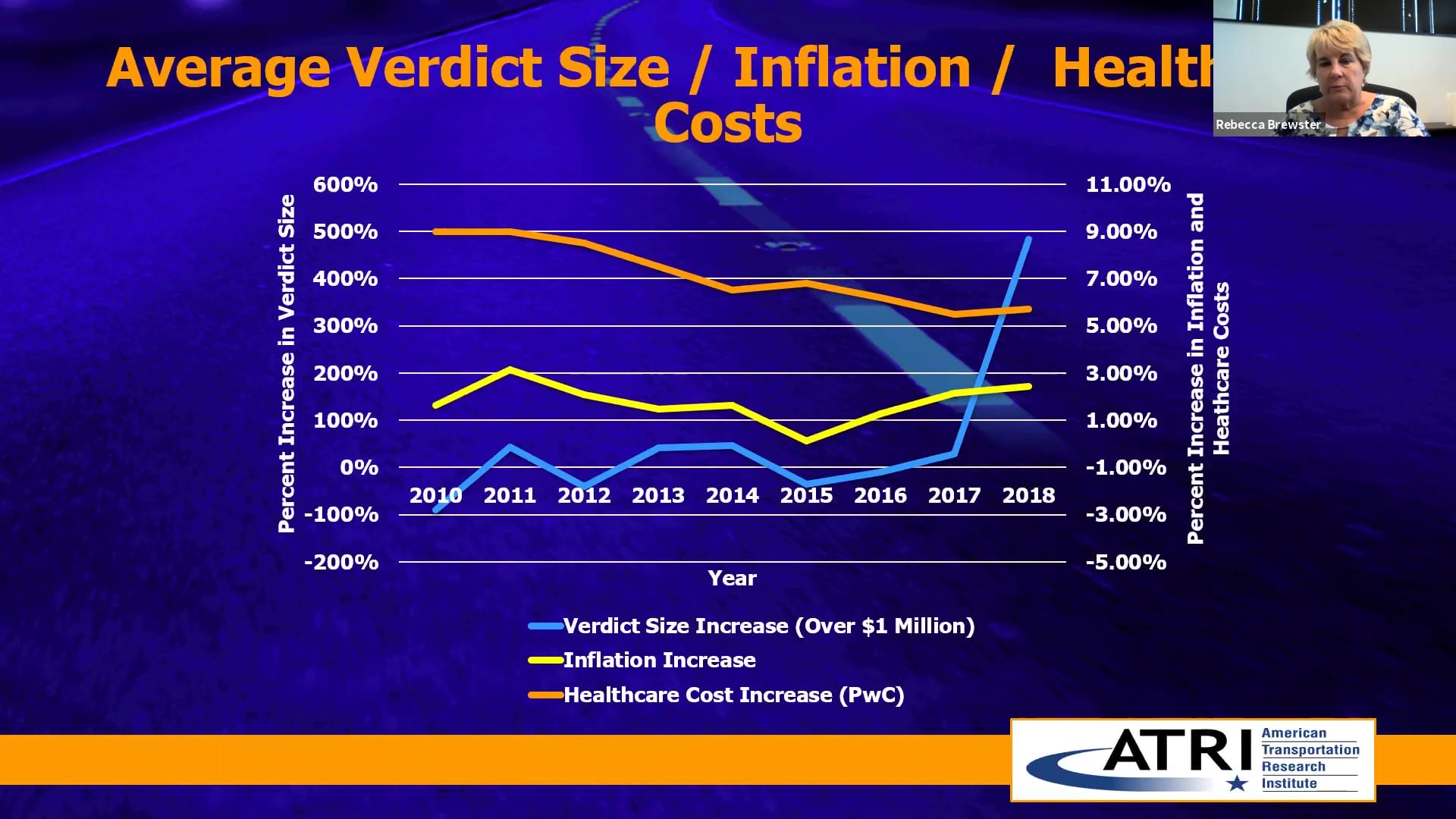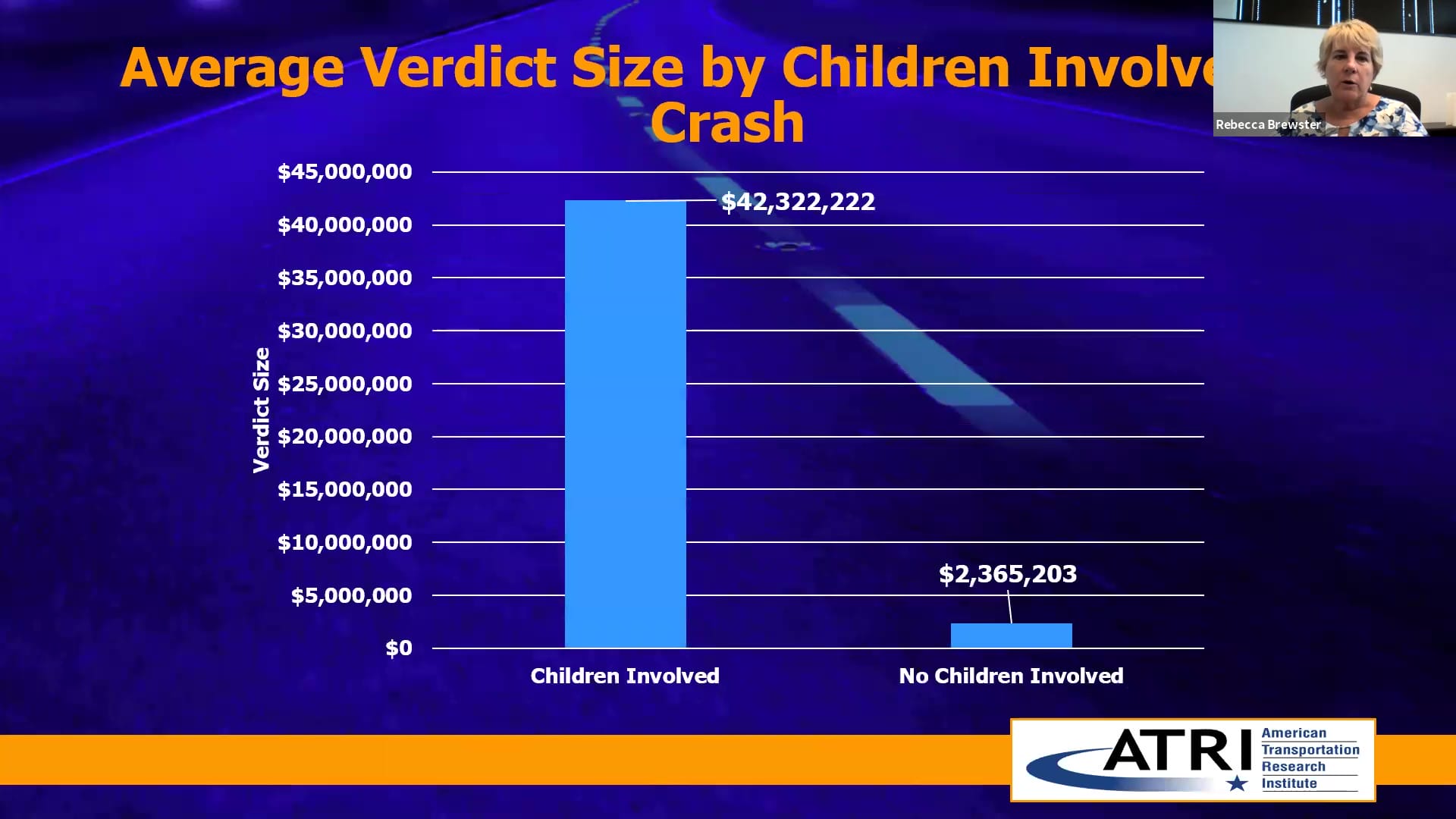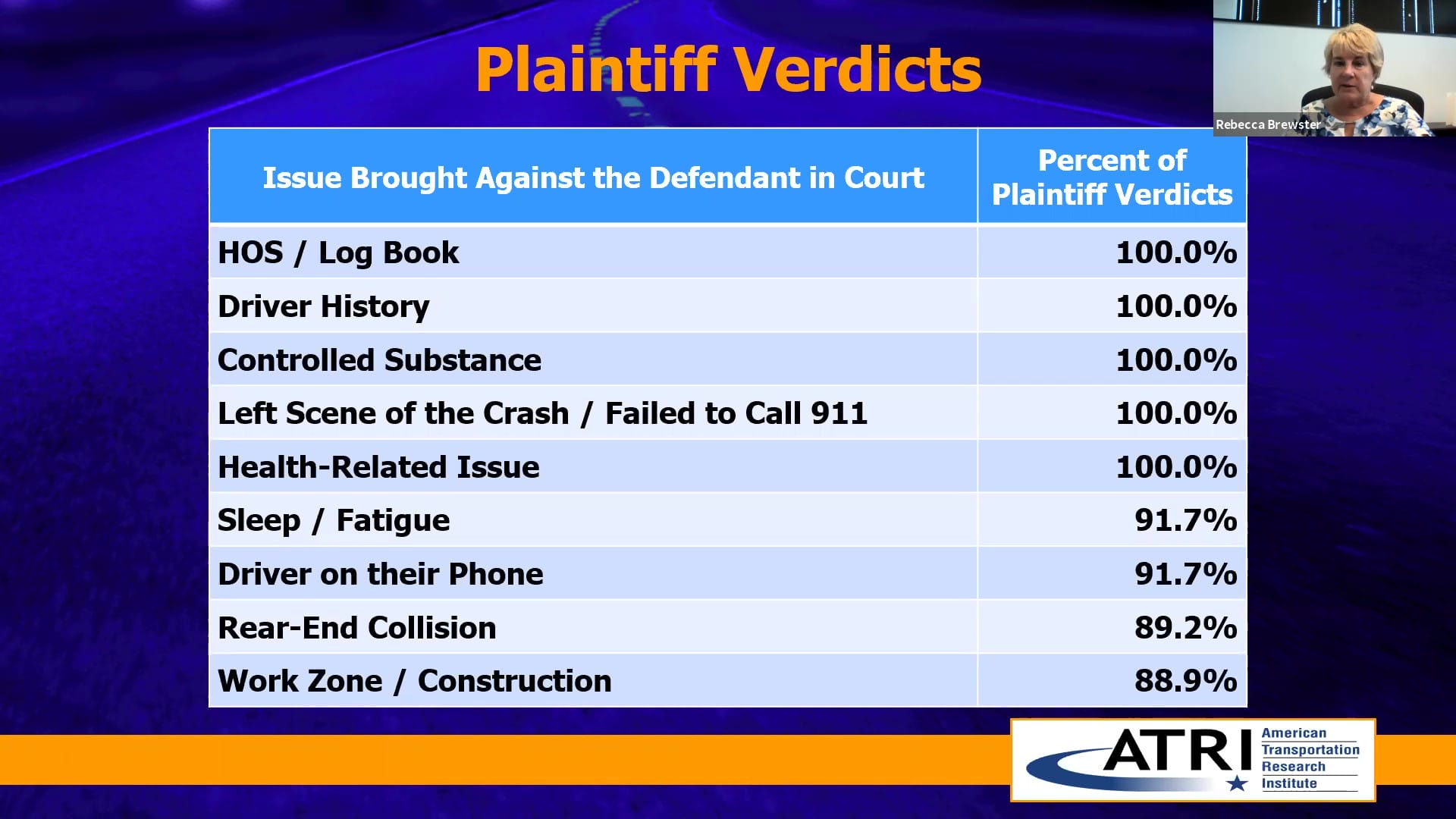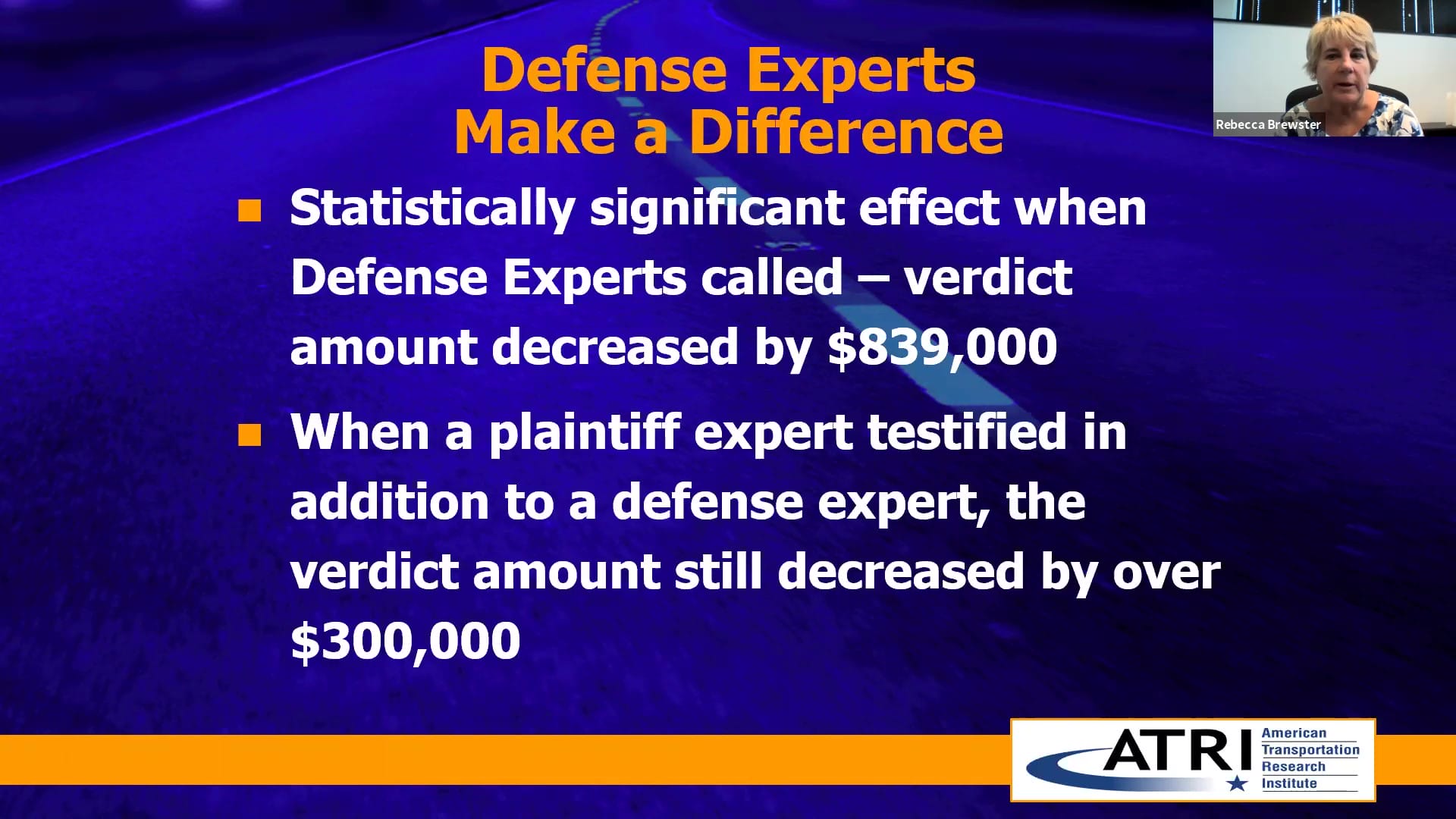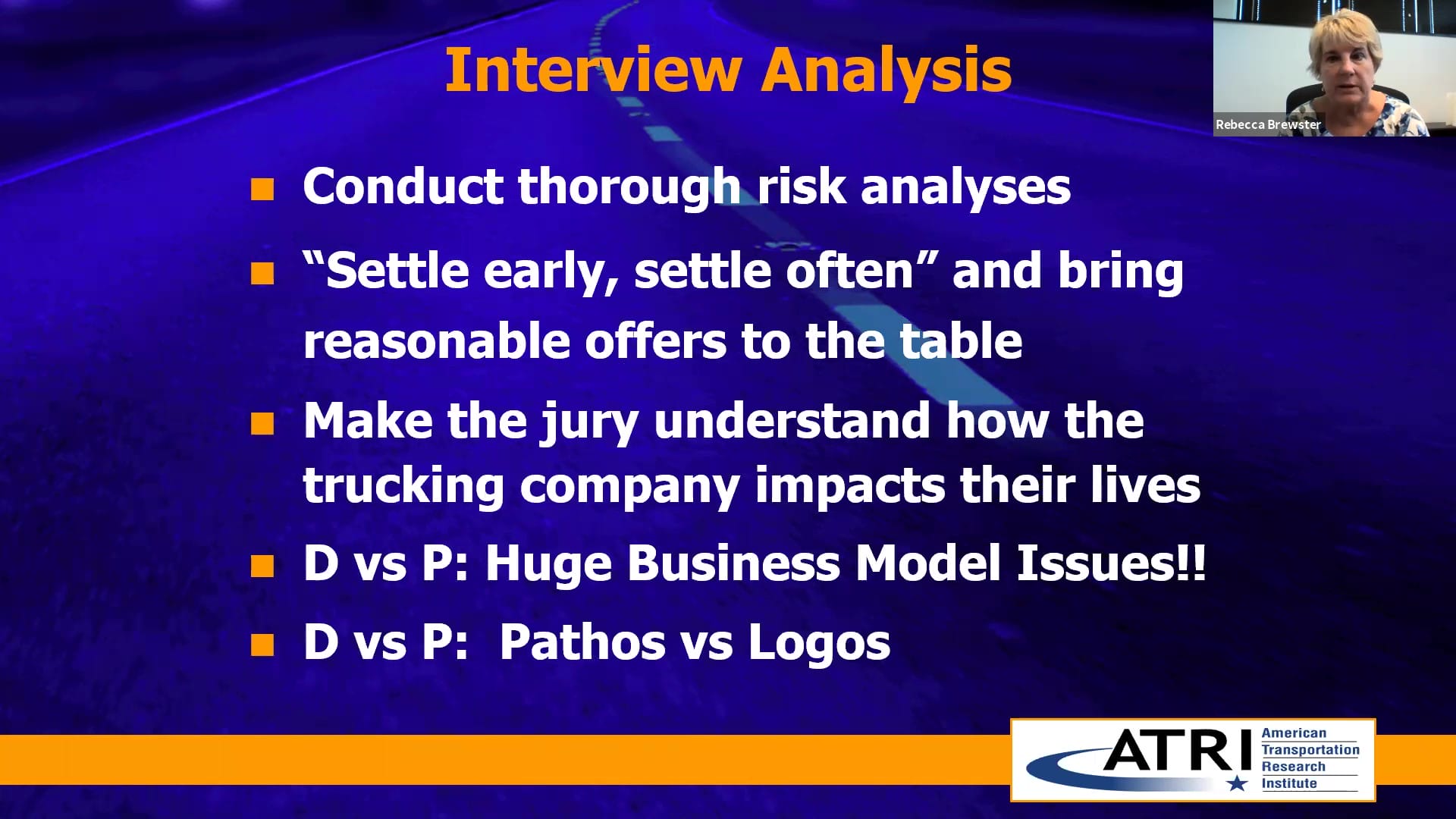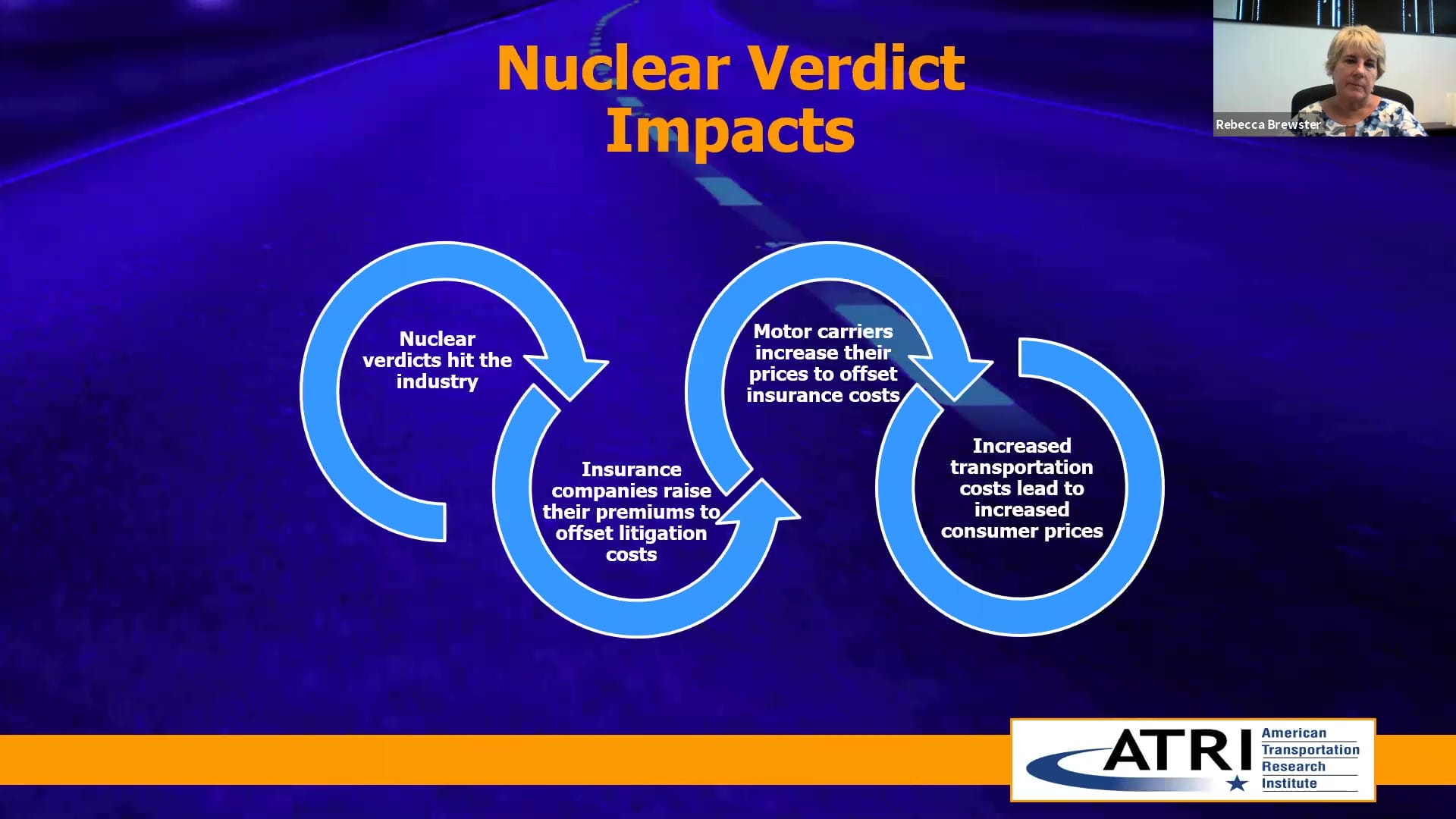Transcription
1
00:00:08.760 –> 00:00:14.610
Infinit-I Workforce Solutions is proud to announce our Engage Event is coming to you this year on your terms.
2
00:00:15.480 –> 00:00:24.600
Engage Events consists of expertly designed interactive sessions that focus on business outcomes and specific challenges the trucking industry will face rolling into 2021
3
00:00:25.350 –> 00:00:36.630
topics covered include: insurance trends and forecast, expert legal perspectives, future readiness by industry leadership, and risk mitigation into 2021.
4
00:00:37.380 –> 00:00:47.220
Specific business outcomes in focus, are reducing your liabilities, establishing a first class culture of safety, and improving communication with your remote employees.
5
00:00:47.850 –> 00:00:54.930
It’s the fastest way to start preparation for 2021, while meeting with like minded and strategically focused professionals like yourself.
6
00:00:55.800 –> 00:01:05.370
Note that this event is a no sales zone, no gimmicks, no pitches, and absolutely no selling as proof this event provides professional development credits through NATMI.
7
00:01:06.300 –> 00:01:18.900
So if you’re a transportation professional seeking to redefine success at your company and make your job a little bit easier in the process. Join us to find out why Infinit-I is the most referred business in the industry.
8
00:01:22.320 –> 00:01:36.330
Mark Rhea: Good morning everyone. It’s November, 5, 2020. Thank you very much. Jay, for that introduction. And the upcoming Boot Camp event November 17- 20 1130 to 130.
9
00:01:37.080 –> 00:01:44.850
Mark Rhea: We’re going to cover insurance issues in detail. We’re going to go over best practices. We’ve got our legal
10
00:01:45.690 –> 00:02:01.170
Mark Rhea: professional attorney Payton Inge will be there to go over litigation and defense strategies as well as our client Success rep, it’s a it’s approximately about a $5,000 value and thank you very much. Jay, for offering it
11
00:02:02.340 –> 00:02:16.050
Mark Rhea: to the, to the viewers today. And I’ve very strongly encourage you to accept Jays invitation to that. So that being said, let’s let’s roll on with today’s webinar. We’ve got a
12
00:02:18.120 –> 00:02:27.930
Mark Rhea: huge issue today, which of course is the ATRI top 10 results that they have done for the last 16 years.
13
00:02:28.980 –> 00:02:43.080
Mark Rhea: I want to make sure everybody knows about our platform Infinit-I Workforce Solutions which can provide up to 20% reduction in crash frequency through remote learning, 80% reduction in violations,
14
00:02:43.740 –> 00:03:02.040
Mark Rhea: 50% reduction in training costs. Those are big numbers. That’s a big representation, but I will tell you that that remote learning does in fact work and it’s a best practice in our industry and I think Jay is offering a
15
00:03:05.130 –> 00:03:17.340
Mark Rhea: Free a free invite. So if you want to participate in that. Sign me up. Just click the yellow button on either of those 30 day complimentary access to the system.
16
00:03:18.330 –> 00:03:34.890
Mark Rhea: Thank you again for that. Jay, and for reference know Jay didn’t just start in this business, and I’ve been working with a director for well over 20-25 years he has had a long term commitment to our industry and the safety profession. So all that being said,
17
00:03:35.910 –> 00:03:39.930
Mark Rhea: I’m ready to get started with today’s topic.
18
00:03:40.980 –> 00:03:46.830
Mark Rhea: And if you’ll go to the next slide, please. My name is Mark Rhea
19
00:03:48.150 –> 00:03:59.190
Mark Rhea: I’ve been in this industry for over 35 years worth of Frozen Food Express with a majority of those years, and I have faced some of the issues that
20
00:03:59.730 –> 00:04:07.620
Mark Rhea: 4 dollar gallon diesel fuel, driver shortages, freight shortages, electronic logs, CSA all those things.
21
00:04:08.250 –> 00:04:18.630
Mark Rhea: And I want to urge you today to exchange the information that Rebecca Brewster will be presenting relative to 2020 we’ve had quite a year in 2020
22
00:04:19.110 –> 00:04:34.230
Mark Rhea: And I want to introduce our guest speaker today, Rebecca Brewster, is the President and Chief Operating Officer of the American Transportation Research Institute ATRI is the recognized
23
00:04:35.430 –> 00:04:44.820
Mark Rhea: absolute best research entity to serve our industry. There are nonprofit organization and their mission is to improve the trucking
24
00:04:45.240 –> 00:04:58.230
Mark Rhea: Industry safety productivity and I’m going to add profitability. They do a lot of work on for the costs and best practices. She’s been with the ATRI off or 27 years
25
00:04:58.980 –> 00:05:08.130
Mark Rhea: She’s with the public and governmental affairs director for North Carolina Chamber of Commerce. She was a fleet analyst for Moen Inc.
26
00:05:08.700 –> 00:05:19.650
Mark Rhea: She’s got a Bachelor of Science in English. So I want to make sure I say all my words correct from Wofford college and she’s a fellow with the North Carolina Institute of political leadership.
27
00:05:21.450 –> 00:05:33.510
Mark Rhea: More important, she is the recent recipient of the fleet owner magazines 2016 dozen outstanding women in trucking the 2013 influential women in trucking award.
28
00:05:33.840 –> 00:05:56.790
Mark Rhea: And in 2010 the J. R. Bob Holiday Award for given by the 50 state Trucking Association. So she’s very well recognized very well. I has a number of recipients so that all that being said, let’s get going. I’ve got a couple of questions for Rebecca before we get into the PowerPoint as
29
00:05:57.960 –> 00:05:59.340
Mark Rhea: Good morning, Rebecca.
30
00:05:59.700 –> 00:06:01.920
Rebecca Brewster: Good Morning, Mark. Thanks for having me today.
31
00:06:01.950 –> 00:06:04.320
Mark Rhea: Hope. Hopefully I pronounce my words correctly so far.
32
00:06:06.390 –> 00:06:25.290
Mark Rhea: As President of ATRI I’m sure you get plenty of opinions and input on the industry on the issues that we face. Did the results that you saw have seen in the 2020 survey obtained this year, provide you or your staff any surprises.
33
00:06:26.280 –> 00:06:34.950
Rebecca Brewster: Well, there were some surprises. And quite frankly, given what we’ve been through, as a nation, and really, as it as a pearl this year with the pandemic.
34
00:06:35.640 –> 00:06:43.860
Rebecca Brewster: I was first of all surprised to not see COVID-19 pop into the top 10 like I thought it might. It was one of the issues that
35
00:06:44.610 –> 00:06:57.660
Rebecca Brewster: respondents to the survey could select but the other real big surprise for us at ATRI was the escalation and ranking of FMCSA Compliance, Safety, and Accountability CSA
36
00:06:58.020 –> 00:07:10.710
Rebecca Brewster: Really surprised to see it in this year survey rise up from number eight last year to number four, this year, I’ve got some information that I’ll share on why we think that is, but that was one of the big surprises for us.
37
00:07:12.000 –> 00:07:22.080
Mark Rhea: Well, yeah, it was, it was a big issue and it came out 10 years ago, so I can’t wait to for us to cover that, see what that is as as what you’ve got to say.
38
00:07:23.760 –> 00:07:27.540
Mark Rhea: The other, the other comment I would our ask you to comment on is
39
00:07:28.800 –> 00:07:37.050
Mark Rhea: As an emerging issues motor carriers obviously are seeing insurance premiums and coverage.
40
00:07:38.310 –> 00:07:40.590
Mark Rhea: As a high priority.
41
00:07:41.910 –> 00:07:53.490
Mark Rhea: Ranking this year and our professional drivers have indicated that parking is at the top of the concerns out there. These are issues are
42
00:07:54.660 –> 00:08:15.420
Mark Rhea: Very easy to identify. But very difficult to solve. So my question is, do you see the insurance issue that the motor carriers are seeing and the parking issues that are professional drivers, seeing as recurring was this a one time blip, or what’s your comment on those two issues.
43
00:08:16.410 –> 00:08:23.730
Rebecca Brewster: Well, I’m going to start with the drivers top concern truck parking and it is an issue that we’ve seen in the top 10 for a number of years now.
44
00:08:24.360 –> 00:08:34.680
Rebecca Brewster: Because it impacts our driver workforce on a daily basis. And we’ll talk about some of the challenges with truck parking. It is a difficult one to resolve. Certainly there are solutions
45
00:08:35.040 –> 00:08:42.000
Rebecca Brewster: out there, but at the end of the day, we simply do not have enough places for our professional drivers to get the required rest.
46
00:08:42.600 –> 00:08:53.160
Rebecca Brewster: The insurance costs and availability, making it into the top 10 is not a surprise. We’ve certainly heard a lot about it and it’s been discussed by ATRI Research Advisory Committee.
47
00:08:53.670 –> 00:09:09.720
Rebecca Brewster: But the fact that it cracked the top 10 for the first time. Now, since our inaugural survey in 2005 really underscores how big of a deal this is. And so I’ve got some information on some of the research we’ve done into that, that I think will be helpful for folks today.
48
00:09:10.500 –> 00:09:16.920
Mark Rhea: Thank you so if these probably aren’t one time blip up. So these are significant issues they’re going to take some very
49
00:09:19.590 –> 00:09:23.460
Mark Rhea: creative solutions to get behind us.
50
00:09:23.880 –> 00:09:29.340
Rebecca Brewster: They are in the muck and really I think one of the things I’d like folks to focus on because it really
51
00:09:29.850 –> 00:09:42.300
Rebecca Brewster: It’s hard to isolate any one of these issues by itself. There is so much interplay between the issues in the top 10 that are really reflective of all that we face in the trucking industry on a day to day basis.
52
00:09:43.620 –> 00:09:52.260
Mark Rhea: Well, thank you for that answer and if we can go to the next slide, we’ll get started with to see the results of the 2020 survey.
53
00:09:53.430 –> 00:10:02.430
Rebecca Brewster: Thanks so much, Mark. And again, I really appreciate the opportunity to join everyone today to talk about our the trucking industry’s top concerns. Next slide Colin.
54
00:10:04.080 –> 00:10:16.200
Rebecca Brewster: If you are not familiar with ATRI and I certainly hope you are. We are the trucking industry is not for profit research organization and all the work that we do on your behalf is generally focused in the areas you see here.
55
00:10:16.860 –> 00:10:24.540
Rebecca Brewster: One of the hallmarks of battery is that we provide all of our research free of charge. And so the studies that I’ll talk about today.
56
00:10:24.870 –> 00:10:29.490
Rebecca Brewster: The full report on the top industry issues for 2020 and previous years.
57
00:10:29.940 –> 00:10:38.700
Rebecca Brewster: Are all available is free downloads from our website at truckingresearch.org pretty easy to remember. That’s what we do and that’s where you can find us online.
58
00:10:39.060 –> 00:10:55.110
Rebecca Brewster: So I would encourage you after this presentation to visit our website. Go to any of the research hot topic areas which look a lot like the top industry concerns and find out the refined and download the research that you would find most helpful for your business. Next slide.
59
00:10:56.730 –> 00:11:04.530
Rebecca Brewster: Just a little bit about actress governance, we are governed by a board of directors, made up of the CEOs of the organization’s you see here.
60
00:11:05.010 –> 00:11:20.940
Rebecca Brewster: Judy McReynolds who is the Chair and CEO of our best corporation is the ATRI Board of Directors chair and we were very pleased to just welcome our newest board member Brendan Evel who is the president and CEO of the Iowa Motor Truck Association. Next slide.
61
00:11:22.470 –> 00:11:26.940
Rebecca Brewster: But our Research Advisory Committee is really where the hard work gets done it at ATRI.
62
00:11:27.870 –> 00:11:39.660
Rebecca Brewster: The men and women representing the organization’s you see here are charged with annually identifying the top research priorities for the trucking industry to which ATRI can bring in expertise to bear.
63
00:11:40.230 –> 00:11:51.270
Rebecca Brewster: And certainly the results of the top industry issues survey each year is one of the big inputs to this group’s deliberations on where those research needs are so
64
00:11:51.690 –> 00:12:02.730
Rebecca Brewster: If you download the full report, you’ll see that for each issue on the survey, there are recommended strategies that have been ranked by survey respondents for how to address those issues.
65
00:12:03.090 –> 00:12:10.080
Rebecca Brewster: And many of those strategies have to deal with research and so it is the charge of the Research Advisory Committee to
66
00:12:10.560 –> 00:12:21.270
Rebecca Brewster: sort through that and figure out what we need to be focused on. Where are those top research needs that reflect what is presented each year in the top industry issues survey.
67
00:12:21.840 –> 00:12:27.540
Rebecca Brewster: What I love about this group is its diversity of representation in terms of the trucking industry.
68
00:12:27.990 –> 00:12:36.960
Rebecca Brewster: Not only do we have motor carriers represented, but we have professional drivers. We have both a Allied and the Teamsters represented. We have law enforcement,
69
00:12:37.470 –> 00:12:49.590
Rebecca Brewster: truck driver training schools, federal government, state government, local government. It really is a very diverse group of trucking industry stakeholders who again have one mission, and that is to figure out
70
00:12:50.100 –> 00:12:55.260
Rebecca Brewster: What research studies can be done to address the trucking industry’s top needs. Next slide.
71
00:12:57.390 –> 00:13:06.600
Rebecca Brewster: So let’s look at the results from this year survey, just as a reminder, the survey we launched it in early September. It was open through mid October.
72
00:13:07.020 –> 00:13:14.640
Rebecca Brewster: We had record participation in this year survey over 3100 trucking industry respondents
73
00:13:15.390 –> 00:13:29.040
Rebecca Brewster: fairly evenly split up about 42% were motor carriers a little less than that were professional drivers and the rest for other industry stakeholders. So, this particular slide represents the overall results of that combined group.
74
00:13:29.550 –> 00:13:35.130
Rebecca Brewster: Where the driver shortage was for the fourth year in a row. The top trucking industry concern.
75
00:13:35.880 –> 00:13:46.980
Rebecca Brewster: The number out to the right of each of those issues is where it ranked in the previous year survey. And so you can see driver compensation, the number two issue this year came up one from last year.
76
00:13:47.580 –> 00:13:56.340
Rebecca Brewster: Truck parking which Mark asked me about in the very beginning rows two spots THIS YEAR TO BE THE NUMBER THREE overall concern and we’ll talk a lot about that.
77
00:13:56.790 –> 00:14:04.320
Rebecca Brewster: I mentioned my our surprise here at battery was to see CSA come up from number eight last year and number four.
78
00:14:04.800 –> 00:14:16.920
Rebecca Brewster: And then rounding out the top five insurance cost and availability, which, as I mentioned, has not been on the annual top industry issue survey since 2005 which was the very first year we did this survey.
79
00:14:17.670 –> 00:14:29.670
Rebecca Brewster: Driver retention held on to its number six position tort reform had fallen off the survey in after 2011 where it was at the number eight issue, but it is back on.
80
00:14:30.300 –> 00:14:37.770
Rebecca Brewster: Very closely related to the insurance cost and availability topic, and I’ll go into some research on that as well.
81
00:14:38.520 –> 00:14:51.450
Rebecca Brewster: Certainly the pandemic driven recession that we experienced this year, I think is behind the economy rising up two positions from number 10 last year to number eight, this year.
82
00:14:52.470 –> 00:15:00.540
Rebecca Brewster: I was another one of those surprises Mark to see detention and delay drop down from number four last year to number nine this year.
83
00:15:01.050 –> 00:15:07.140
Rebecca Brewster: But we we know based on some research we’ve done this year. What’s going on with detention and so we’ll talk a little bit about that.
84
00:15:07.710 –> 00:15:15.390
Rebecca Brewster: And then the biggest sort of mover on the list this year was the hours of service rules which were at number two last year.
85
00:15:15.870 –> 00:15:22.170
Rebecca Brewster: Down to number 10 this year and we know that the Federal Motor Carrier Safety Administration issued a final rule.
86
00:15:22.500 –> 00:15:30.420
Rebecca Brewster: This year that addressed in many cases, what were the concerns that drivers and motor carriers had with the hours of service rules.
87
00:15:30.900 –> 00:15:36.450
Rebecca Brewster: So I think that was behind some of that drop. But I also think that the industry has
88
00:15:37.320 –> 00:15:48.060
Rebecca Brewster: With the changes that have been implemented over the past several years to the hours of service rules. I think the industry has adapted to those rules and accepts them and they are much less of a concern for everyone. Next slide.
89
00:15:48.450 –> 00:15:55.920
Mark Rhea: So detention hours maybe some relief, maybe a little bit of relief on those huge issues, but
90
00:15:57.090 –> 00:15:59.220
Mark Rhea: Taking their places parking and insurance.
91
00:15:59.970 –> 00:16:04.800
Rebecca Brewster: Right. And, and, again, as you said, Mark. None of these are really easily solved.
92
00:16:05.100 –> 00:16:16.710
Rebecca Brewster: They are they are certainly things we need to focus on and commit our resources to dealing with and that includes what we do at ATRI is committing to do the research to address these issues but none of these are going to go away overnight.
93
00:16:18.210 –> 00:16:18.810
Rebecca Brewster: Next slide.
94
00:16:20.760 –> 00:16:30.660
Rebecca Brewster: So those were the overall results. This is what it looks like when we break out the responses from professional drivers on the left to and motor carriers on the right.
95
00:16:31.230 –> 00:16:40.080
Rebecca Brewster: On the motor carrier side driver shortage and driver retention are once again as they were in last year survey their number one and number two issues.
96
00:16:40.620 –> 00:16:51.150
Rebecca Brewster: CSA again that that surprise issue for me it’s high ranking comes in at number three and on the motor carrier side because they are the ones, bearing the, the cost associated with
97
00:16:51.630 –> 00:17:01.440
Rebecca Brewster: Insurance and rising insurance premium costs as well as excessive litigation ranked top insurance costs and tort reform is their number four. Number five issues.
98
00:17:02.010 –> 00:17:12.210
Rebecca Brewster: On the driver side truck parking again drivers experience this every single day. This lack of available safe parking for drivers.
99
00:17:12.810 –> 00:17:21.690
Rebecca Brewster: And so it is their number one issue, followed by their pay and it’s interesting when we did our very first survey in 2005
100
00:17:21.990 –> 00:17:27.060
Rebecca Brewster: The driver shortage was number two fuel costs were number one. That year, but the driver shortage was number two.
101
00:17:27.660 –> 00:17:38.220
Rebecca Brewster: The number one strategy to deal with the driver shortage was ranked at was to raise driver pay and so compensation wallets a newer standalone issue to the survey.
102
00:17:38.820 –> 00:17:51.900
Rebecca Brewster: Certainly has been a part of this survey for a long time. And then the drivers again because they are the ones who experience the impacts directly of that detention and delay rank it is their number three issue.
103
00:17:53.340 –> 00:17:53.850
Rebecca Brewster: Next slide.
104
00:17:56.580 –> 00:18:07.560
Rebecca Brewster: So let’s talk about the driver shortage. Number one, overall, and number one for motor carriers. One of the challenges of our workforce is the age of our workforce.
105
00:18:08.040 –> 00:18:16.380
Rebecca Brewster: And so this is the latest data from the Bureau of Labor Statistics and it compares the age of our driver workforce to
106
00:18:17.070 –> 00:18:26.190
Rebecca Brewster: The construction industry professional and business services and the entire US workforce and what you see in the trucking industry is were represented by the blue line there.
107
00:18:27.210 –> 00:18:36.540
Rebecca Brewster: We have the largest percentage of our workforce among those groups in the 45 to 54 year age range and in the 55 to 64 year age range.
108
00:18:37.050 –> 00:18:49.410
Rebecca Brewster: While, we don’t have the highest percentage of those for work group of those four groups in the 65 and over we 6.1% of our workforce is 65 and over our driver workforce.
109
00:18:49.980 –> 00:18:58.590
Rebecca Brewster: And certainly there’s some good news and that it means that we have an older more mature experience generally experienced workforce and that’s good.
110
00:18:59.070 –> 00:19:08.970
Rebecca Brewster: But the problem for us is that if you look at the left side of that bar chart you see that we have the smallest percentage of our workforce in the 20 to 24 year age bracket. And so we know that
111
00:19:09.330 –> 00:19:20.070
Rebecca Brewster: As those of us who are on the right side of that graph begin to retire. We are not bringing enough young people into the industry to fill those seats.
112
00:19:20.370 –> 00:19:28.920
Rebecca Brewster: In those trucks. Now, when you look at this year’s report certainly the number one strategy for addressing the driver shortage
113
00:19:29.220 –> 00:19:43.560
Rebecca Brewster: Was to work with the federal government to open up an apprenticeship program at such as is proposed in the Drive Safe Act that would with a number of thresholds and criteria in place.
114
00:19:44.130 –> 00:20:02.310
Rebecca Brewster: Open up interstate driving to 18 to 20 year olds and so that would begin to bridge that gap of folks who get out of high school who are looking for a career who might consider trucking, but who right now. Absent the Drive Safe Act are prohibited from driving interstate.
115
00:20:03.390 –> 00:20:03.990
Rebecca Brewster: Next side.
116
00:20:06.780 –> 00:20:18.900
Rebecca Brewster: Driver compensation number two issue for drivers, it is certainly as I mentioned in the 2005 the very first survey we did the the top rank strategy for dealing with the driver shortage was to raise driver pay
117
00:20:19.620 –> 00:20:28.290
Rebecca Brewster: One of the ways we monitor driver pay and benefits is through our annual operational costs of trucking we started this research in 2008
118
00:20:29.040 –> 00:20:34.710
Rebecca Brewster: We are finishing the analysis on the 2020 report so that one will be out very soon.
119
00:20:35.250 –> 00:20:47.940
Rebecca Brewster: But what we do for this researchers we collect very detailed financial data from hundreds of motor carriers, we aggregate that, we analyze it and we come up with an annual cost per mile to operate a truck and a cost per hour to operate a truck.
120
00:20:48.360 –> 00:20:54.720
Rebecca Brewster: We do that, overall, and then we do it by sector. We do it by region of the country because the costs associated with operating
121
00:20:55.140 –> 00:21:08.070
Rebecca Brewster: A truck are different based on the sector, you’re in your equipment by be more expensive your driver you might pay your drivers more, but it also difference by where you operate in the country, which is why we do those different breakouts. Next slide.
122
00:21:10.770 –> 00:21:25.200
Rebecca Brewster: So in the bottom right hand corner, you see the most recent operational costs of trucking figure $1.82 to operate a truck. But the reason I put this in here specifically was when talking about the driver shortage and driver compensation.
123
00:21:25.740 –> 00:21:28.650
Rebecca Brewster: If you look across just this five year history here.
124
00:21:29.250 –> 00:21:38.610
Rebecca Brewster: You see that the driver wage cost per mile and the driver benefit cost per mile have continued to climb. And we know that’s how fleets are responding to the driver shortage
125
00:21:38.910 –> 00:21:48.690
Rebecca Brewster: And to driver retention. They will, they are paying more to not only entice new entrance to the industry, but to keep the good drivers that they do have. Next slide.
126
00:21:51.300 –> 00:22:03.480
Rebecca Brewster: Just another way to look at that data I here’s a little more of a longitudinal look and you can see that since 2012 we’ve seen the driver wage cost per mile increased 43%
127
00:22:03.810 –> 00:22:15.390
Rebecca Brewster: And benefits are up 55% and so fleets are again responding to the shortage by providing increased compensation and benefits for their drivers.
128
00:22:16.590 –> 00:22:26.670
Rebecca Brewster: Now I mentioned early on that we had a fairly even split between motor carriers and drivers who responded to this survey, little more on the motor carrier side than on the driver side.
129
00:22:27.120 –> 00:22:36.120
Rebecca Brewster: But you might think, well, it was just drivers who said compensation was a concern, and I would tell it to you. That is not necessarily correct. We also had motor carriers.
130
00:22:36.450 –> 00:22:45.510
Rebecca Brewster: Who indicated that driver compensation is one of their top concerns, and I think this bar chart is reflecting that. There comes a point where
131
00:22:46.170 –> 00:22:54.060
Rebecca Brewster: You continue to raise driver pay and benefits, but you have something unforeseen like a recession brought on by a pandemic.
132
00:22:54.600 –> 00:23:11.580
Rebecca Brewster: It is very hard to walk people’s pay back. And so I know that fleets are also concerned. What is the tipping point for driver pay that allows you to recruit and retain drivers, but doesn’t get you stuck in a bind. If the economy turns. Next slide.
133
00:23:14.100 –> 00:23:26.760
Rebecca Brewster: So certainly this year has been a big year and it’s had an impact on some of these top industry issue surveys, including the number three issue truck parking. So just a little background on this particular research.
134
00:23:27.300 –> 00:23:37.110
Rebecca Brewster: early this year in conjunction with a OOIDA we launched a survey to really identify how the industry was being impacted by the pandemic.
135
00:23:37.680 –> 00:23:43.920
Rebecca Brewster: And I was a naysayer for doing this survey when my staff came to me with the idea, I said.
136
00:23:44.280 –> 00:23:50.610
Rebecca Brewster: People are far too overwhelmed with just figuring out what how we’re going to get through this pandemic to respond to an entry survey.
137
00:23:50.910 –> 00:24:07.920
Rebecca Brewster: But I was very wrong because within just over two weeks, we had over 5000 respondents a, you can see that 77% of them were drivers. So just a great response to this survey, but with paying specific attention to truck parking, which is the number three issue. Next slide.
138
00:24:10.740 –> 00:24:21.750
Rebecca Brewster: You can see that we had about 44% of the respondents said that truck parking was somewhat harder or much harder to find during the pandemic.
139
00:24:22.110 –> 00:24:31.440
Rebecca Brewster: Now we know that part of that is driven by the fact that particularly early on and number of states closed their public rest areas.
140
00:24:32.040 –> 00:24:39.210
Rebecca Brewster: So we have an already constrained parking system for professional drivers and we had states essentially taking out capacity.
141
00:24:40.050 –> 00:24:49.800
Rebecca Brewster: Because of their concerns over keeping the public rest areas clean and sending out people to clean them when the pandemic was first starting.
142
00:24:50.430 –> 00:24:59.880
Rebecca Brewster: And so I think that is reflected in our March survey respondents saying truck parking was somewhat harder, much harder to find.
143
00:25:00.540 –> 00:25:07.830
Rebecca Brewster: Also detention. Remember, I mentioned that detention had dropped down and I was surprised, but we did see that in this survey.
144
00:25:08.190 –> 00:25:20.520
Rebecca Brewster: About a third of the respondents said that they were experiencing longer detention times. I think one of the features that was driving that is not only were we, the trucking industry dealing with COVID-19
145
00:25:20.940 –> 00:25:31.350
Rebecca Brewster: But our customer base was dealing with COVID-19 and so they likely had reduced staffing to work the docks and that also increased the detention time
146
00:25:32.730 –> 00:25:33.270
Rebecca Brewster: Next slide.
147
00:25:36.420 –> 00:25:49.830
Rebecca Brewster: We have an ATRI truck GPS data set that is comprised of over a million trucks worth of GPS data that comes into ATRI in real time and we do a whole host of analyses with this.
148
00:25:50.400 –> 00:25:57.570
Rebecca Brewster: This is what the truck parking situation looks like using that truck GPS data set. This is a public rest area in Indiana.
149
00:25:58.140 –> 00:26:08.430
Rebecca Brewster: And red indicates parked trucks. And so you would expect to see in the rest area parking lot, you would expect to see Park trucks. That’s way that where they are supposed to be parked.
150
00:26:08.910 –> 00:26:16.590
Rebecca Brewster: But if you look at that closely you will see on both sides of the interstate on the entrance ramp and on the exit ramps to that.
151
00:26:17.040 –> 00:26:34.500
Rebecca Brewster: Those rest areas trucks are parked because they simply don’t have enough space within the rest area to park. And so this is symptomatic of why you understand when they shuttered rest areas. What happens because then all these vehicles have to go somewhere else to park. Next slide.
152
00:26:38.520 –> 00:26:48.210
Rebecca Brewster: And certainly the picture on the at the bottom there of trucks. Parked on the ramp is is just a real world example of what that looks like when those rest areas are closed.
153
00:26:49.140 –> 00:26:56.910
Rebecca Brewster: And and that’s an unsafe situation for our professional drivers, they have a required amount of rest. They’re supposed to get. They need to be able to get that rest.
154
00:26:57.210 –> 00:27:08.760
Rebecca Brewster: So they can be safer on the roadway. But when you have to park on a ramp. It is not a safe situation for you. The driver. It’s not a safe situation for the vehicles that have to navigate around you.
155
00:27:09.180 –> 00:27:18.600
Rebecca Brewster: And it’s certainly not good for our infrastructure because shoulders are not typically designed to hold the weight of commercial vehicles over extended periods of time.
156
00:27:19.380 –> 00:27:29.070
Rebecca Brewster: The other two are just signs that actually were pre pandemic. The drivers have posted on social media sites of what they’d face when they get to customer facilities.
157
00:27:30.090 –> 00:27:38.910
Rebecca Brewster: And as I’ve put on the slide, we wonder why we have a driver shortage. When this is the kind of treatment that drivers received when they get to some facility so
158
00:27:39.450 –> 00:27:47.820
Rebecca Brewster: When you as a fleet are thinking about what can I do about the truck parking situation. I can’t build a parking lot for my drivers to park in as they go.
159
00:27:48.240 –> 00:27:53.160
Rebecca Brewster: But certainly, you can talk to your customers about this situation.
160
00:27:53.550 –> 00:28:01.260
Rebecca Brewster: You know, charging your drivers to use the restroom or not even letting them use the restroom and certainly this has been exacerbated during the pandemic is everyone sort of
161
00:28:01.770 –> 00:28:08.850
Rebecca Brewster: shut themselves in and did not provide our central workers are professional drivers access to their facility so
162
00:28:09.240 –> 00:28:24.930
Rebecca Brewster: You know it’s it’s it’s making sure that you engage in that dialogue with your customers to make sure they understand how hard it makes it for you to recruit and retain drivers when this is what your drivers experience at their facilities. Next slide.
163
00:28:27.060 –> 00:28:34.800
Rebecca Brewster: So I mentioned that CSA really surprised me that it was so high on the ranking this year. And I think this is really
164
00:28:35.220 –> 00:28:40.980
Rebecca Brewster: indicative of sort of what we as an industry have been through since CSA first came on the scene in 2010
165
00:28:41.580 –> 00:28:51.420
Rebecca Brewster: And I have put here just six of the studies that we at ATRI have done on CSA that we we’ve done more than this. We have a bigger body of work than this. And certainly, there have been
166
00:28:51.720 –> 00:28:57.330
Rebecca Brewster: Many other studies including the one done by the National Academies of Sciences to really figure out
167
00:28:58.350 –> 00:29:02.460
Rebecca Brewster: What’s working with CSA what’s not working. How can we improve on a system.
168
00:29:02.970 –> 00:29:13.170
Rebecca Brewster: And I was quite frankly so surprised by the high ranking of CSA this year overall number four. And then on the motor carrier list. Number three.
169
00:29:13.500 –> 00:29:21.330
Rebecca Brewster: That I actually reached out to some of the survey respondents who ranked it so high, to say you know what’s going on, what’s driving this and
170
00:29:21.720 –> 00:29:30.780
Rebecca Brewster: Things like things we’ve done research on at ATRI, things like the crash accountability. We know that from CSA has made permanent their crash
171
00:29:31.110 –> 00:29:39.390
Rebecca Brewster: Preventability determination program, but it’s not working for everybody because you have to submit those reviews to the DataQ system.
172
00:29:40.380 –> 00:29:50.370
Rebecca Brewster: People are concerned about their peer group assignments, they’re concerned about data that shows up on their scores that isn’t from their fleet. And so there are issues with CSA
173
00:29:51.090 –> 00:30:08.640
Rebecca Brewster: That are driving its ranking backup. And so again, we’ve done a lot of work on CSA and I would encourage you to check into these studies on our website but it was a surprise to me. But after talking to folks I understand why it had that high ranking. Next slide.
174
00:30:11.100 –> 00:30:13.860
Rebecca Brewster: So I earlier mentioned the
175
00:30:15.390 –> 00:30:28.710
Rebecca Brewster: interplay between insurance costs and availability and tort reform and certainly that for out on the motor carrier ranking. And so let’s talk a little bit about first of all insurance costs. Next slide.
176
00:30:31.830 –> 00:30:42.480
Rebecca Brewster: Again from our most recent annual operate or no operational costs of trucking. This is the change year over year truck insurance premiums up 12% and last year’s report.
177
00:30:43.020 –> 00:30:53.010
Rebecca Brewster: Over the past five years we had seen that increase at about 18.3% I believe is the the increase we had seen. Next slide.
178
00:30:53.700 –> 00:31:12.300
Rebecca Brewster: But that doesn’t tell the story quite as graphically as this does because I think the smaller fleets are really, in many cases, bearing the brunt of insurance premium costs. And so you can see here that the smaller fleets in our data set in last year’s report.
179
00:31:13.470 –> 00:31:22.680
Rebecca Brewster: Nearly just over three times we’re paying three times as much in premiums per mile then or the larger fleets, but these costs are hitting everyone
180
00:31:23.130 –> 00:31:35.970
Rebecca Brewster: And certainly the larger fleets are in a better position to do things like higher deductibles, which would bring down their cost per mile that smaller fleets are not able to do. Next slide.
181
00:31:38.160 –> 00:31:45.930
Rebecca Brewster: And one of the big drivers of the increased insurance costs availability and certainly a
182
00:31:46.440 –> 00:32:01.320
Rebecca Brewster: Outcome of the lack of tort reform up to this point is the growth in nuclear verdicts. And this was this particular study, which we released in June was the number one research priority identified by our Research Advisory Committee in 2019
183
00:32:02.550 –> 00:32:14.250
Rebecca Brewster: So to do this research we pulled together a database of 600 cases truck involved crash cases spanning 15 years lot of data associated with each of those crashes.
184
00:32:14.760 –> 00:32:29.850
Rebecca Brewster: We also did a number of interviews with attorneys on both sides of the equation. Both trucking industry defense attorneys, as well as plaintiffs attorneys. We talked to a lot of insurance industry experts and motor carrier safety experts. Next slide.
185
00:32:32.040 –> 00:32:41.130
Rebecca Brewster: So looking at sort of what’s the landscape. We’ve been the the litigation landscape. We’ve been facing as an industry. And so you see here from 2010 to 2018
186
00:32:42.120 –> 00:32:56.310
Rebecca Brewster: Where the average verdict in a truck evolved crash in our database was over a million dollars. We’ve seen a 967% increase in the average verdict size. Next slide.
187
00:33:00.180 –> 00:33:11.280
Rebecca Brewster: Just looking at cases where the the verdict was a million or more. And these are not necessarily all nuclear verdicts. So I’ll get to the nuclear verdict piece of this, but just cases where the verdict was a million or more in our data set.
188
00:33:11.700 –> 00:33:31.440
Rebecca Brewster: You can see a 235% increase in the number of cases be in the early years of our data set 2005 to 2011 it versus the latter years of our data set 2012 to 2019 so big growth in a number of cases where the verdicts are starting to creep up. Next slide.
189
00:33:32.910 –> 00:33:45.600
Rebecca Brewster: But in talking in our qualitative interviews with attorneys on both sides and with insurance industry we set the nuclear verdict threshold at 10 million or above.
190
00:33:46.050 –> 00:34:02.700
Rebecca Brewster: And so looking just at cases in our data set where the verdict was 10 million or more, you can see early years of the data set, versus later years, we had a 92.9% increase in the number of cases where the verdicts were over $10 million. Next slide.
191
00:34:05.850 –> 00:34:14.580
Rebecca Brewster: One of the arguments for why verdict sizes are increasing is because healthcare costs have increased so
192
00:34:15.240 –> 00:34:22.800
Rebecca Brewster: Addressing the health care issues of those in those crashes is more costly and so therefore the verdicts are going up.
193
00:34:23.430 –> 00:34:29.100
Rebecca Brewster: So this particular chart compares growth invert excise which is the blue line.
194
00:34:29.910 –> 00:34:39.240
Rebecca Brewster: And the, the access for that is on the left versus growth in inflation and health care costs and the access for those is on the right. And you can see
195
00:34:40.140 –> 00:34:58.680
Rebecca Brewster: Health care and inflation increases are below 7% whereas on the verdict size it’s at 500% annually. So there’s simply is no rationalization that you can make saying that these are going up, simply because of the cost of health care. Next slide.
196
00:35:01.140 –> 00:35:10.260
Rebecca Brewster: Lot of great quantitative analysis went into this study, and I’m really very proud of our staff for all the analytical work so
197
00:35:10.830 –> 00:35:26.970
Rebecca Brewster: For instance, when we looked at our database and the crash involved a traumatic brain injury, the average verdict was $6.7 million dollars if there was no traumatic brain injury, the average verdict size was $2.7 million dollars. Next slide.
198
00:35:27.990 –> 00:35:32.700
Rebecca Brewster: Where we really saw a big difference was when children were involved in the crash.
199
00:35:33.270 –> 00:35:41.940
Rebecca Brewster: When children involved, the average verdict size $42 million dollars no children involved $2.3 million dollars. Now you could say.
200
00:35:42.360 –> 00:35:48.840
Rebecca Brewster: Well, Rebecca. That’s interesting. But there’s nothing I can do about the fact that children may or may not be involved. And that’s true.
201
00:35:49.680 –> 00:35:58.200
Rebecca Brewster: But what you can use this quantitative analysis for is to better prepare yourself and understand your risks.
202
00:35:58.890 –> 00:36:10.530
Rebecca Brewster: Before going into court so that if the crash involves a traumatic brain injury. You know what you’re up against. And as you’re talking with your insurance carrier and your defense attorneys about
203
00:36:11.760 –> 00:36:25.080
Rebecca Brewster: Analyzing whether to go to court, take the case to court or whether to settle understanding what your risks are makes you make better informed decisions about which path to take. Next slide.
204
00:36:27.450 –> 00:36:42.150
Rebecca Brewster: The type of crash had an impact on the average verdict size. And you can see here that where the truck to the crash involved is spinner role of the vehicle. The average verdict size was 14 almost $14.7 million dollars. Next slide.
205
00:36:44.670 –> 00:36:57.480
Rebecca Brewster: And we found among the data set that certain factors that were brought against the defendant had an impact on the plaintiffs success in that case.
206
00:36:57.840 –> 00:37:06.840
Rebecca Brewster: And so in five instances. If it involves an hours of service violation or a logbook issue if there was a driver history file issue.
207
00:37:07.260 –> 00:37:14.760
Rebecca Brewster: If the crash involved controlled substances. If your driver left the scene of the crash or fail to call 911 or if there was a health related issue.
208
00:37:15.210 –> 00:37:34.200
Rebecca Brewster: All five of those had 100% of the verdicts go in favor of the plaintiffs. So again, understanding what you are up against when you are involved in a crash empowers you to make much better decisions about whether to settle or to take the case to court. Next slide.
209
00:37:37.380 –> 00:37:47.850
Rebecca Brewster: If you are considering whether or not to call a expert witness it to help your defense. We found that in quantitative analysis of that makes a difference.
210
00:37:48.300 –> 00:37:56.760
Rebecca Brewster: You can see that when the defense called an expert witness the average verdict size decreased by 839,000 dollars.
211
00:37:57.330 –> 00:38:09.750
Rebecca Brewster: So while you might be concerned about the cost of paying for an expert witness up front. Certainly the outcome. I think justifies that on the backside in decrease of verdict size.
212
00:38:10.290 –> 00:38:24.450
Rebecca Brewster: Even we found even when the plaintiff side called an expert witness, if the defense side also had an expert witness, we still saw the average verdict excise decreased by over $300,000 dollars. Next slide.
213
00:38:26.520 –> 00:38:35.220
Rebecca Brewster: I mentioned that we did a number of qualitative interviews. And again, both with defense attorneys and with plaintiffs attorneys and
214
00:38:35.700 –> 00:38:42.450
Rebecca Brewster: That thorough risk analysis is so critical. And that’s where I think this research really makes an impact for motor carriers.
215
00:38:43.200 –> 00:38:53.580
Rebecca Brewster: You know, settle early settle often but but truly lawyers on both sides said where you can come with a reasonable settlement offer your outcomes are much better.
216
00:38:54.210 –> 00:39:01.860
Rebecca Brewster: We had several plaintiffs attorneys tell us that nothing is worse than the defense coming with a really low ball settlement offer.
217
00:39:02.640 –> 00:39:18.540
Rebecca Brewster: They sit in many instances that just is a no go. They’ll just close the books up take you to court and you’ll end up paying a lot more than if you really understand again empowered by the data in this analysis what you’re up against and making a reasonable settlement offer.
218
00:39:19.590 –> 00:39:29.730
Rebecca Brewster: That third bullet point came out of the interviews and I think really given what we have experienced in the pandemic, I think, is working in our favor these days.
219
00:39:30.240 –> 00:39:42.330
Rebecca Brewster: When we can make the jury understand just how critical the trucking industry is and, more specifically, how much of a valuable asset to that community, the trucking company is the
220
00:39:45.210 –> 00:39:45.600
Rebecca Brewster: One.
221
00:39:48.120 –> 00:39:50.400
Rebecca Brewster: That makes the difference and
222
00:39:51.300 –> 00:40:02.850
Rebecca Brewster: No time to type their name for 30 plus years, have I seen that play out more than during the pandemic when everyone realized suddenly my gosh, if I’m going to hoard toilet paper in hand sanitizer.
223
00:40:03.090 –> 00:40:09.090
Rebecca Brewster: I need the trucking industry to deliver that and they really are our heroes delivering everything we need. And so I think
224
00:40:09.600 –> 00:40:23.310
Rebecca Brewster: I think we are in a good position as we are on the backside of this pandemic hopefully to see that favorable impression of the trucking industry play out among jury pools. Next slide.
225
00:40:26.640 –> 00:40:38.340
Rebecca Brewster: So I mentioned the connection between tort reform and motor carrier costs, specifically insurance costs and availability and in our research, of course we documented.
226
00:40:39.360 –> 00:40:53.580
Rebecca Brewster: These nuclear verdicts increased litigation against the industry is having an impact on overall moto carrier costs, specifically in the insurance, but we know that the insurance companies are increasing the premiums.
227
00:40:54.240 –> 00:40:59.370
Rebecca Brewster: Their, their underwriting standards are much stricter, they’re more selective in who they insure,
228
00:40:59.850 –> 00:41:12.600
Rebecca Brewster: And this plays out across all fleets, whether you’re involved in these crashes or not ultimately all fleets are paying to cover the losses associated with these large crashes.
229
00:41:13.530 –> 00:41:26.340
Rebecca Brewster: Or cases in verdicts and we know that there are carriers who are closing their doors because of insurance costs and not being able to bear the increased cost of insurance. Next slide.
230
00:41:28.350 –> 00:41:28.860
Rebecca Brewster: The
1
00:00:00.000 –> 00:00:13.590
Rebecca Brewster: great way to really connect the dots for people who might not understand the tie in between what you and I pay at the store for whatever it is we’re going to consume and these large verdicts.
2
00:00:14.099 –> 00:00:19.800
Rebecca Brewster: Because when the industry gets hits with these large verdicts insurance companies have to raise their
3
00:00:20.520 –> 00:00:36.330
Rebecca Brewster: Premiums to cover the costs motor carriers have to raise the cost of shipping things to cover those if they are able to do so and that increased transportation costs just means at the end of the day, we all pay more for our consumer goods next side.
4
00:00:39.180 –> 00:00:45.840
Rebecca Brewster: So certainly our Research Advisory Committee cognizant of the 2019 top industry issues.
5
00:00:46.680 –> 00:00:57.720
Rebecca Brewster: And the work that we had done when they met earlier this year identified the 2020 top research priorities and again focused on insurance costs and tort reform.
6
00:00:58.110 –> 00:01:07.320
Rebecca Brewster: You can see that their top study that we’re working on now top ranked study that we’re working on now is to look at the impact of small verdicts. So we’ve
7
00:01:07.950 –> 00:01:19.770
Rebecca Brewster: done a very good job with these larger verdicts in this particular study, we’re looking at verdicts and settlements of less than a million. And so, following a similar methodology, we’ve pulled together a similar data set.
8
00:01:20.550 –> 00:01:34.050
Rebecca Brewster: And again, it will be very data rich to provide you with guidance on what you need to do to deal with these cases as they come along and ultimately hopefully prevent them.
9
00:01:34.890 –> 00:01:43.350
Rebecca Brewster: Another one that I’ll just point out is the owner, operator, independent contractors in the supply chain. Now we know out in California, just on Tuesday.
10
00:01:45.420 –> 00:01:50.010
Rebecca Brewster: legislation passed that would allow Uber and Lyft to stay out of the
11
00:01:51.840 –> 00:01:56.640
Rebecca Brewster: Employment classification situation they were in. So that is a positive thing.
12
00:01:57.270 –> 00:02:05.790
Rebecca Brewster: Because the trucking industry also operates with a lot of owner operators and independent contractors, but there’s not a lot of great information.
13
00:02:06.630 –> 00:02:15.810
Rebecca Brewster: Out there research database information about why individuals choose that pathway, how it benefits the industry and, more importantly, what would happen.
14
00:02:16.140 –> 00:02:25.710
Rebecca Brewster: If that employment model were to disappear, but would be the impact on the supply chain. What would be the impact on the trucking industry. So we’re have that one underway as well. Next slide.
15
00:02:29.340 –> 00:02:38.370
Rebecca Brewster: So that’s a snapshot of the top industry issues and our research on your behalf focused on those issues, but I hope that
16
00:02:39.240 –> 00:02:48.540
Rebecca Brewster: That entices you to be a participant in ATRI research because, as I always tell people, more is better when it comes to data and our research.
17
00:02:49.020 –> 00:03:01.440
Rebecca Brewster: And so I hope that the next time you see a data call or a survey put out by ATRI you’ll take the time to participate, whether it’s in our operational costs of trucking, our top industry issues surveys.
18
00:03:01.830 –> 00:03:09.210
Rebecca Brewster: Oftentimes will put out surveys that are focused on drivers specifically to deal with an issue like our detention work.
19
00:03:09.630 –> 00:03:23.730
Rebecca Brewster: And so I hope that if your fleet, you will encourage your drivers to participate. And we’re always looking for new research ideas to be considered by our Research Advisory Committee and those can be sent to us through our website at truckingresearch.org. Next slide.
20
00:03:25.680 –> 00:03:36.870
Rebecca Brewster: I will tell you that a great way to support our research agenda is to support us financially ATRI is a 501C3, not for profit research organization.
21
00:03:37.320 –> 00:03:47.730
Rebecca Brewster: And so all the studies that I’ve described here today are all done with charitable contributions and as I like to say certainly no contribution is too big but no contribution is too small.
22
00:03:48.510 –> 00:03:59.190
Rebecca Brewster: We receive $25 checks from professional drivers. And to me, that’s very gratifying because it tells me that they value the work we do on their behalf. Next slide.
23
00:04:01.290 –> 00:04:08.580
Rebecca Brewster: So Mark, there’s my contact information. I hope that answered some questions, but I’m certainly happy to take some more.
24
00:04:10.530 –> 00:04:19.110
Mark Rhea: I’ll leave that up there for a couple of minutes. I would just comment, those, those numbers on the nucular verdicts are breathtaking.
25
00:04:21.000 –> 00:04:22.530
Mark Rhea: absolutely breathtaking.
26
00:04:23.910 –> 00:04:28.890
Mark Rhea: And the other comment I would make is, you know, the surprise in the
27
00:04:31.170 –> 00:04:46.980
Mark Rhea: Interest in CSA, the renewed interest in CSA and I wonder if if part of that is the motor carrier saying, you know, we’ve invested we have invested time, money and effort into CSA
28
00:04:47.880 –> 00:04:55.980
Mark Rhea: And maybe we’re not getting the return on the investment relative to improved insurance premiums. Just a thought.
29
00:04:57.180 –> 00:05:08.250
Rebecca Brewster: No, I think it’s a very valid point. And you know, I think when CSA first came out in 2010 I think the industry was very supportive because FMCSA has limited resources.
30
00:05:08.730 –> 00:05:16.110
Rebecca Brewster: Everyone understands that. So a system that would help them better target their resources to focus on those that that need the most improvement.
31
00:05:16.680 –> 00:05:27.300
Rebecca Brewster: I think we can all agree with that. But the, you know, as we documented in some of our research the disconnect between your safety performance in a certain basic and your basic score.
32
00:05:27.570 –> 00:05:38.430
Rebecca Brewster: And the ability of those basic scores to predict safety performance. There were some disconnects there, you know, and the system has been tweaked overall but again.
33
00:05:39.360 –> 00:05:56.850
Rebecca Brewster: As a system to evaluate how you’re doing relative to your peers still create some concerns for people. You know it bad data in means bad data out. And so, you know, when I made calls to carriers who ranked it so high they frequently referenced.
34
00:05:58.290 –> 00:06:01.920
Rebecca Brewster: Crashes, violations, other items that showed up on their
35
00:06:03.150 –> 00:06:10.620
Rebecca Brewster: CSA scores that had nothing to do with their fleet. And so there’s a lot of still issues and concerns with CSA
36
00:06:14.250 –> 00:06:17.310
Mark Rhea: What’s the return what the return, what do I get for that and
37
00:06:19.230 –> 00:06:20.820
Mark Rhea: These nuclear verdicts are
38
00:06:21.840 –> 00:06:34.890
Mark Rhea: bring all that up. So let me ask you one more question. I know this came out last week. It’s new on the press, what what feedback have you gotten from the industry on the 2020 responses.
39
00:06:35.970 –> 00:06:42.420
Rebecca Brewster: Well, certainly there is a lot of concurrence that the driver shortage is number one.
40
00:06:45.090 –> 00:06:50.280
Rebecca Brewster: There are those who will say there is no driver shortage. It’s a driver compensation issue.
41
00:06:51.690 –> 00:07:01.110
Rebecca Brewster: But we see those issues very closely linked in the rankings. So, you know, which came first, the shortage of the compensation issue I you know I won’t argue
42
00:07:02.160 –> 00:07:02.760
Rebecca Brewster: So,
43
00:07:03.810 –> 00:07:13.920
Rebecca Brewster: I think certainly on the motor carrier side. I think it’s very reflective of their concerns and I think drivers from what I’ve heard from drivers that I’ve spoken to since we’ve come out.
44
00:07:14.580 –> 00:07:20.700
Rebecca Brewster: appreciate the fact that truck parking went up from number five to its highest ranking. It’s been on the survey to number three.
45
00:07:21.480 –> 00:07:32.370
Rebecca Brewster: It’s number one on the driver list, but it’s number three overall. I think they they are very appreciative of the fact that everyone is starting to recognize how big of an issue. This is for the industry because it impacts everything
46
00:07:33.030 –> 00:07:41.640
Rebecca Brewster: For instance, it impacts industry productivity, it impacts my hours of service because in our in previous truck parking research we’ve done we documented.
47
00:07:42.570 –> 00:07:52.890
Rebecca Brewster: On average, about an hour a day that drivers give up of productive driving time because they’re going to go ahead and park now because they’re afraid they’re not going to find a place to park down the road.
48
00:07:53.310 –> 00:08:00.750
Rebecca Brewster: And so that starts to add up across drivers across fleets and across the industry just from that lack of available parking
49
00:08:02.130 –> 00:08:19.020
Mark Rhea: Yes, and just, just the focus on that in on that issues, some parallels to the detention issue this drop down to nine some some relief, but it’s not going to come without some some creative solutions. So let’s go to the next slide please.
50
00:08:21.300 –> 00:08:24.210
Mark Rhea: Here’s just a quick overview of
51
00:08:25.440 –> 00:08:32.580
Mark Rhea: The Infini-I Workforce Solution customer base. I want to also just do a quick shout out to Jeremy Reimer
52
00:08:33.750 –> 00:08:35.310
Mark Rhea: with Driver Reach who is
53
00:08:36.420 –> 00:08:46.950
Mark Rhea: helping us develop a workforce of CDL drivers out there to offset that driver shortage. We’ve got people all across the nation here obviously
54
00:08:48.420 –> 00:08:57.420
Mark Rhea: Also want to extend if we can go to the next slide, please. The invite for participating.
55
00:08:59.310 –> 00:09:04.080
Mark Rhea: That’s just me. That’s my contact and Rebecca again.
56
00:09:06.540 –> 00:09:10.800
Mark Rhea: We do have a 30 day. There we are. If you want. This is a quick
57
00:09:13.080 –> 00:09:26.580
Mark Rhea: If you’d like to register for the engage event we talked about earlier. That’s the 17th through the 20th just pop in a yes we’ll get right back with you very strongly encourage you to do that we’re going to
58
00:09:27.510 –> 00:09:34.950
Mark Rhea: Dig into some more of the details of the issues that Rebecca brought up today with insurance, risk assessments,
59
00:09:36.750 –> 00:09:45.360
Mark Rhea: best practices that are out there. If you would like free access to remote safety training for your drivers hit a yes here.
60
00:09:46.140 –> 00:10:00.480
Mark Rhea: We can get you set up this afternoon on that 30 day free trial from thank you again for that Jay. And if you want to be contacted by Rebecca just answer yes on the pole and we will get right back with you.
61
00:10:02.010 –> 00:10:10.710
Mark Rhea: Some really really good information. Today I again would encourage you to share this information not only with your driving staff to non driving staff.
62
00:10:11.460 –> 00:10:22.800
Mark Rhea: For the very simple reason. These issues are there for a reason. There are not simple solutions to these problems these nuclear verdicts. The parking issue.
63
00:10:24.420 –> 00:10:45.270
Mark Rhea: We’re just going to have to grind it out we as an industry faced multiple issues in 2020 and, as expected, were able to overcome them. So thank you for that very much. And we’ll go to the next slide. I want to see what questions we’ve got
64
00:10:47.010 –> 00:10:50.070
Mark Rhea: I’ve got one question here, Rebecca.
65
00:10:51.960 –> 00:11:00.300
Mark Rhea: Impact on the industry on the driver shortage from the clearing house. Did you want to comment on that.
66
00:11:01.020 –> 00:11:13.140
Rebecca Brewster: Certainly, so we’ve seen the numbers come out about FMCSA it 30,000-40,000 drivers who have been disqualified because of the clearing house and
67
00:11:15.300 –> 00:11:25.080
Rebecca Brewster: I believe that was the last number I saw. And certainly, that was the intent of the clearing house was to identify drivers who tested positive for drug use.
68
00:11:25.770 –> 00:11:34.230
Rebecca Brewster: The challenge for us in terms of the shortage is a large percentage of those drivers have not even started the return to duty process which there is a process to
69
00:11:34.920 –> 00:11:43.950
Rebecca Brewster: return to work but if they are not even starting that process, it’s probably a good indicator that they are going to not return to the industry.
70
00:11:44.400 –> 00:11:56.490
Rebecca Brewster: Now, when you think about just on Tuesday, the number of States that joined the ranks of those that are legalizing marijuana use, whether its medical or recreational
71
00:11:58.740 –> 00:12:03.690
Rebecca Brewster: I think this is going to continue to be a shortage issue for us, if you will.
72
00:12:04.440 –> 00:12:13.380
Rebecca Brewster: Because we will see individuals who might want to go into a trucking career, who are in a state where use of marijuana is legalized
73
00:12:14.100 –> 00:12:29.310
Rebecca Brewster: Who don’t connect the dots between what I do on the weekend legally in my state. And then my ability to pass up pre-employment drug screen, I think, is going to be continuing challenge for us in terms of building out our workforce.
74
00:12:30.630 –> 00:12:37.200
Mark Rhea: Yeah, so it’s pretty simple to decision to use recreational marijuana disqualifies you from operating a commercial vehicle.
75
00:12:37.500 –> 00:12:44.310
Mark Rhea: Pretty, pretty simple and that obviously takes away from from the, from the population is out there.
76
00:12:46.410 –> 00:12:57.390
Mark Rhea: We’ve got a number of questions back getting copy of this slide today. And the answer is yes, we will have a replay that will be slides available for everyone.
77
00:12:58.500 –> 00:13:01.680
Mark Rhea: So don’t worry about that. We’ll get back to everybody on that.
78
00:13:05.040 –> 00:13:07.260
Mark Rhea: I don’t see any other questions.
79
00:13:08.460 –> 00:13:17.520
Mark Rhea: I think we’ve covered a lot of ground today and I again want to thank Rebecca and her staff for the research, you’ve done and in
80
00:13:18.090 –> 00:13:28.350
Mark Rhea: I will tell you I have personally used ATRI research in litigation to defend us in in court of law because of the work you’ve done so.
81
00:13:28.890 –> 00:13:40.530
Mark Rhea: It’s absolutely important to continue what you’re doing out there. We’re looking forward to the work you’re going to do with CSA obviously and
82
00:13:42.030 –> 00:13:50.370
Mark Rhea: truck parking I, who knows. I don’t know what the solution to that is, but it’s an issue. We didn’t know the answer to detention either daily so
83
00:13:51.720 –> 00:13:54.570
Mark Rhea: We just got to get a roll our sleeves up and get to work on that.
87
00:14:20.670 –> 00:14:27.480
Mark Rhea: Okay, well, we will conclude today’s webinar on the ATRI
88
00:14:29.310 –> 00:14:40.740
Mark Rhea: Top 10 and I want to thank Rebecca for the time you’ve invested with your staff pulling all this information together. Thank you again and we will see everybody
89
00:14:41.940 –> 00:14:59.790
Mark Rhea: Next month. Thank you. And if you do want to participate in the engage event on the 17th through the 20th, I strongly encourage you will have insurance will have lawyers will have best practices. It’s a really good opportunity. Thank you very much. And we will see you next time.
90
00:15:01.860 –> 00:15:02.790
Mark Rhea: Thank you, Rebecca.
91
00:15:03.000 –> 00:15:03.720
Rebecca Brewster: Thank you.
Infinit-I’s Top Takeaways
In this webinar hosted by Mark Rhea, with over 35 years of trucking experience, and special guest Rebecca Brewster, the President and Chief Operating Officer of the American Transportation Research Institute (ATRI), engage in a comprehensive discussion on several challenges the industry faces, including high diesel fuel cost, driver shortage, freight shortage, electronic logs, and CSA.
Key takeaways from the webinar include:
- Brewster expressed surprise that COVID-19 did not make it into the top 10 concerns for the trucking industry, despite the significant challenges it posed globally.
- Another surprise for the ATRI team was the escalation in ranking of FMCSA Compliance, Safety, and Accountability (CSA), from number eight in the previous year to number four in 2020.
- Insurance premiums and coverage emerged as a high-priority concern for motor carriers, while professional drivers signaled parking as their leading concern. Both issues, while easy to identify, are notoriously difficult to resolve.
- The shortage of truck parking, an issue that has been in the top 10 for several years, impacts the driver workforce daily. Brewster emphasized that there are simply not enough places for professional drivers to get their required rest.
The conversation between Rhea and Brewster provided valuable insights into the trucking industry’s challenges in 2020. The discussion not only highlighted the problems but also set the stage for future discussions on potential solutions and improvements, thereby proving to be an invaluable resource for everyone involved in the trucking industry.
More Webinar Replays
TAT: Be a Changemaker Video
Preparing for Insurance Renewal: Webinar Replay Video #72
You might also like
Need Help?
Call Now
Sales: 972-232-7305
Support: 903-792-3866 x300
About
Free Resources
Benefits
- Reduce Motor Carrier Insurance Costs
- Accident Prevention Training and Legal Defense
- Regulations & Compliance
- Operations & Productivity
- Reduce Accident Costs by 50.7% Yearly
- Improve CSA Scores by 17-50%
- Reduce Accidents by 18%
- Reduce Driver Turnover up to 85%
- Improve Fuel Efficiency 3.5%+
- Reduce Training Costs by 50%
- Overages, Shortages and Damages
- Training Management System Benefits
- #1 Truck Driver Safety Training LMS


